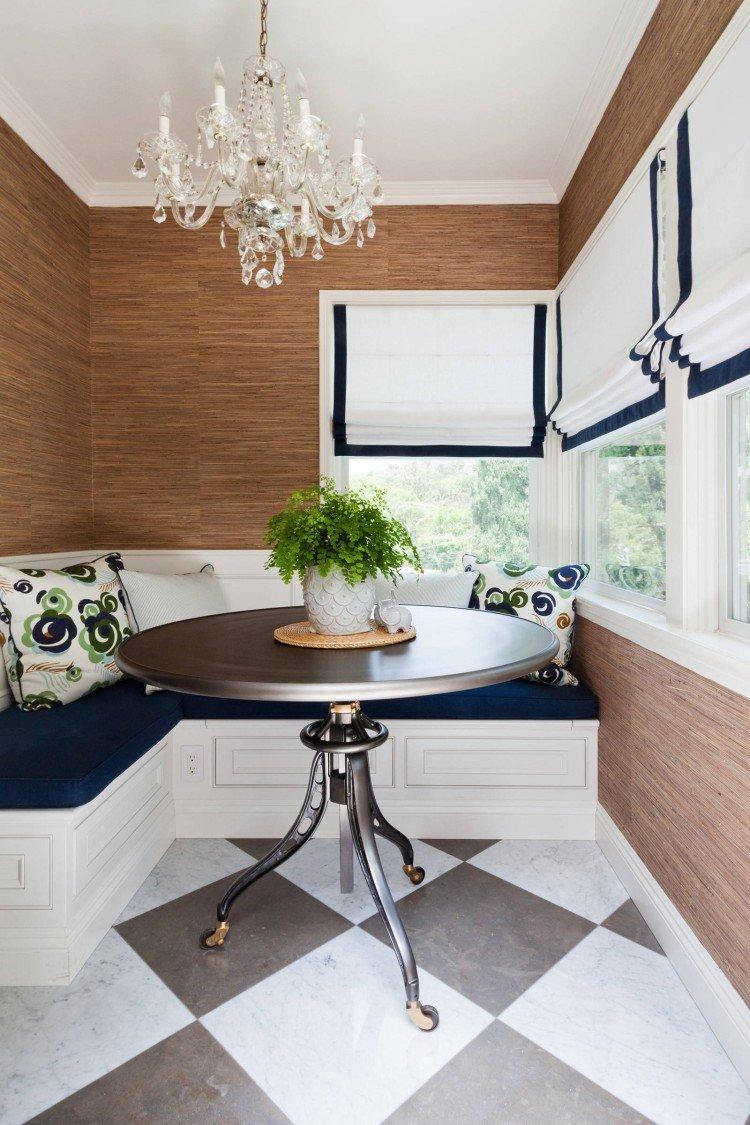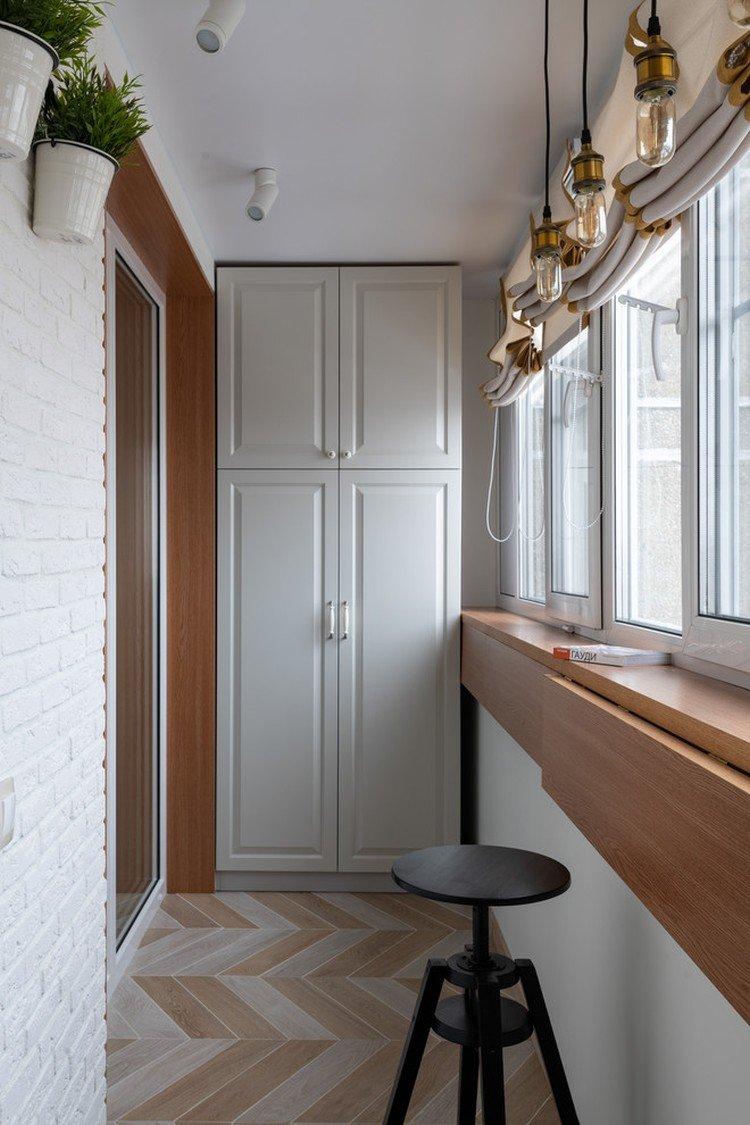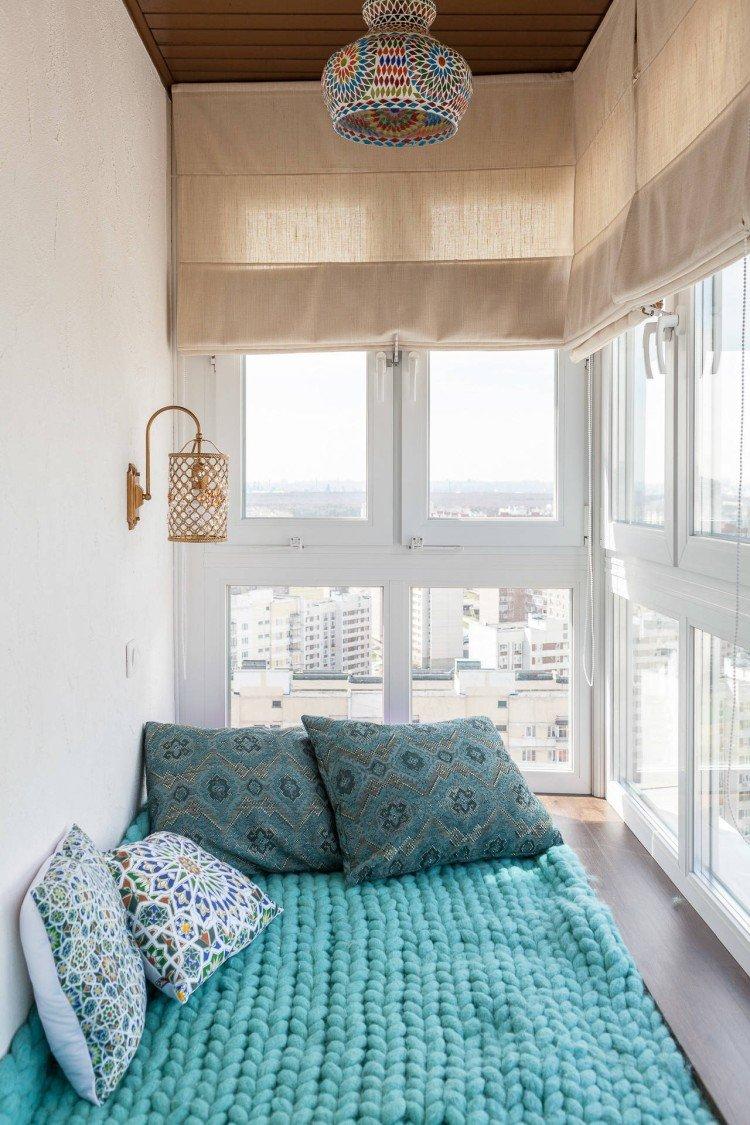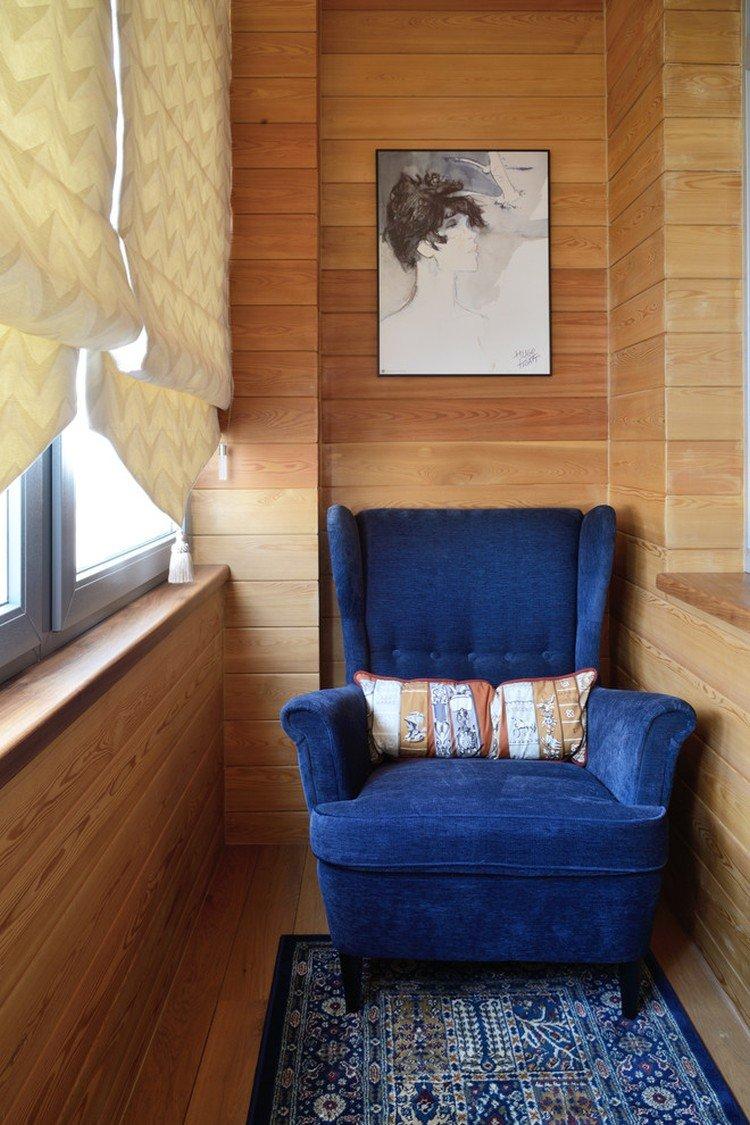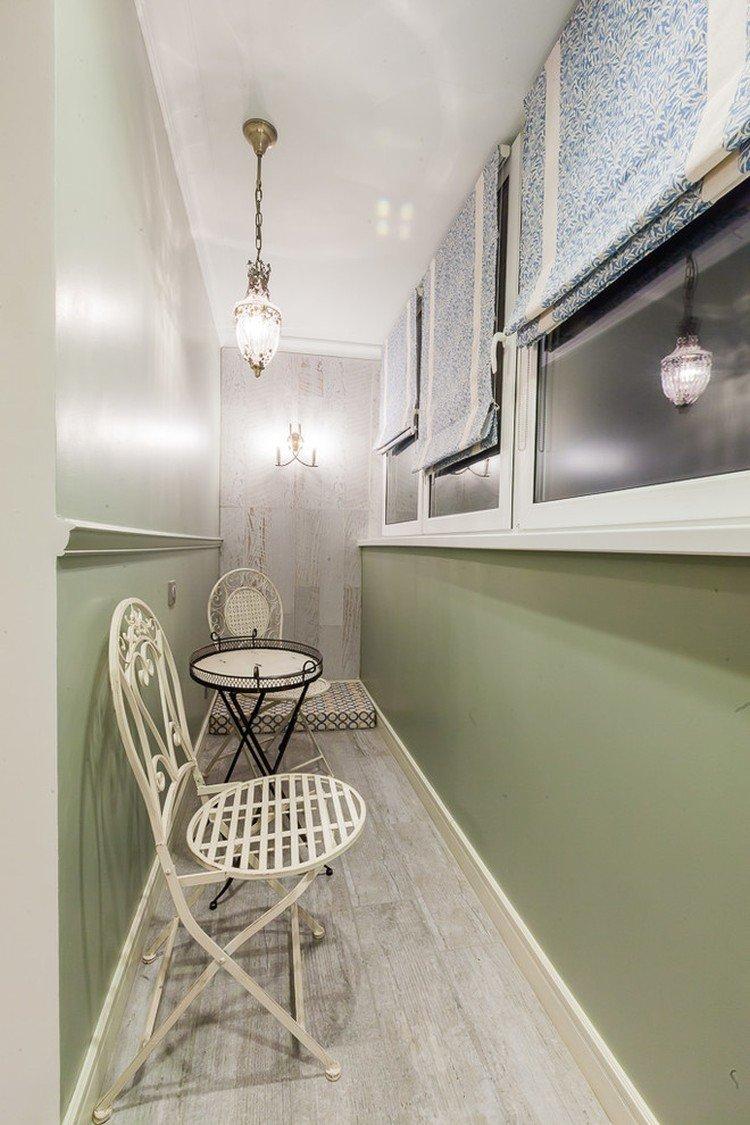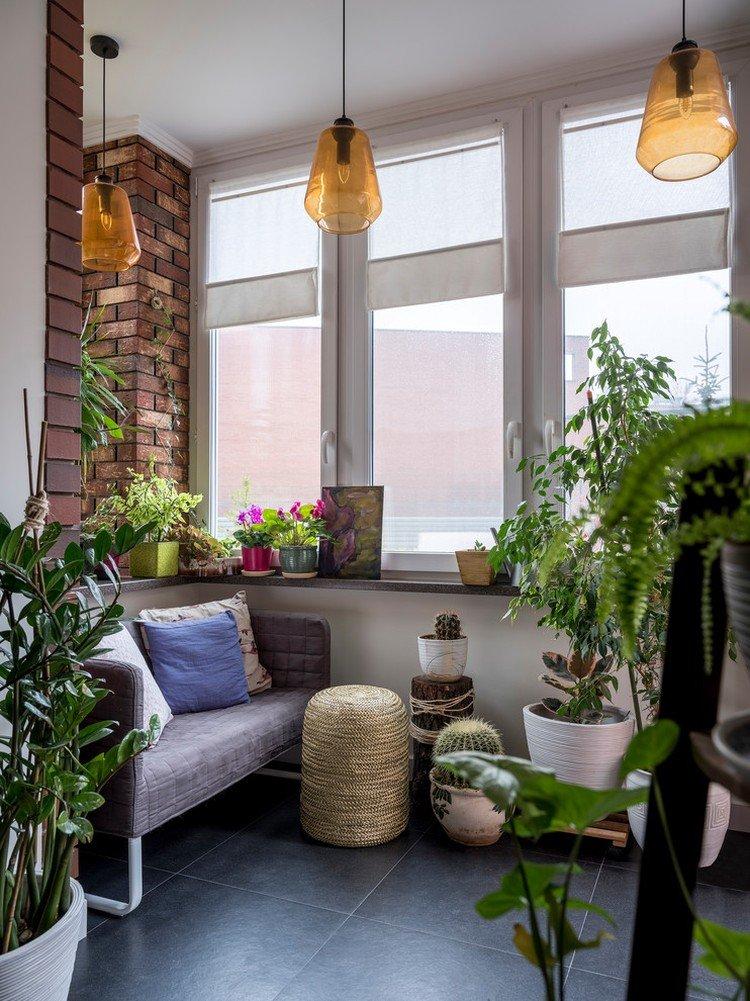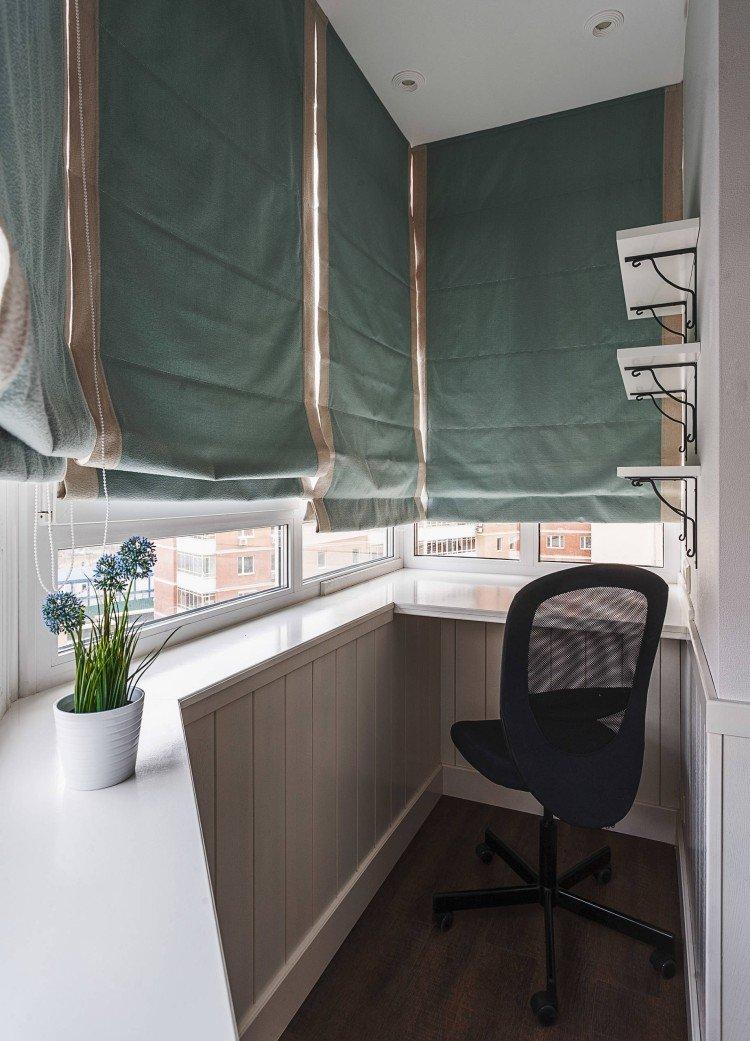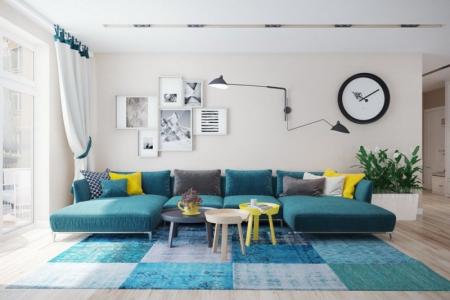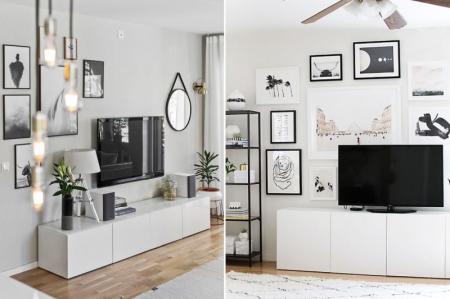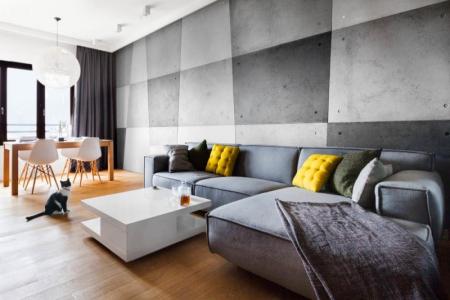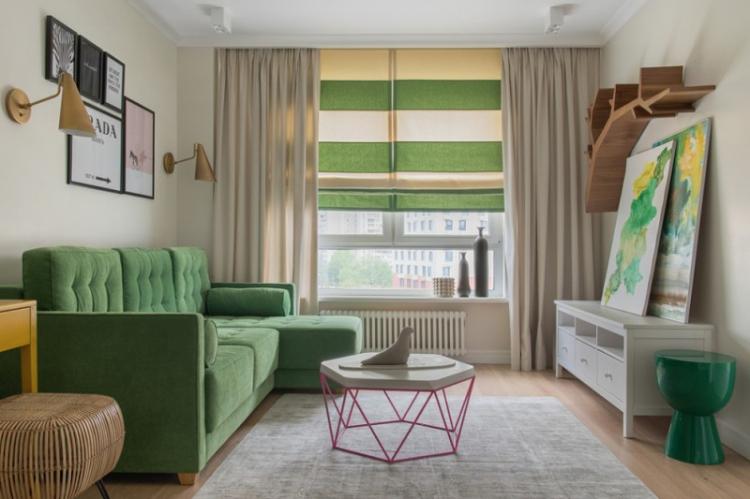
Heavy curtains take up space, openwork tulle still gathers dust, and the blinds look too rough and “office-like”. The solution came to us right from the past of the Roman Empire in the form of simple, laconic and functional Roman blinds! We will tell you what their features are, what they are, how to choose a fabric and how to use them in interiors!
Roman shade design
The design of Roman roller blinds has been around for several thousand years, and since then it has hardly changed. A textile fabric is attached to the cornice, through which the guide rods pass. A weighting material is sewn in from the bottom to fix the shape, and using a cord or chain, you can adjust the level and fix the curtain at any height.
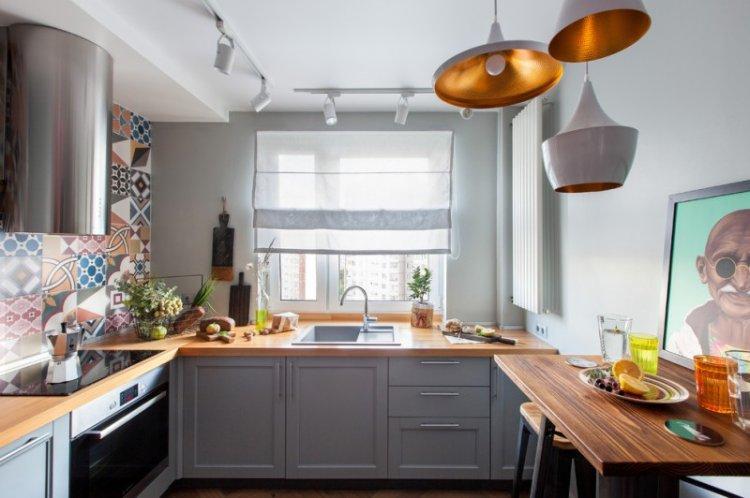
Types of curtains
At first glance, all Roman shades are the same, but in fact they differ in the rigidity of the structure and the location of the folds. In addition to the classic and cascading ones, we suggest paying attention to four more types!
Frame roman blinds
Classic is always a flat, smooth canvas on a strong rigid frame. When lifted, uniform and straight horizontal folds are formed, which gradually overlap. This is the simplest, but most common and versatile option.
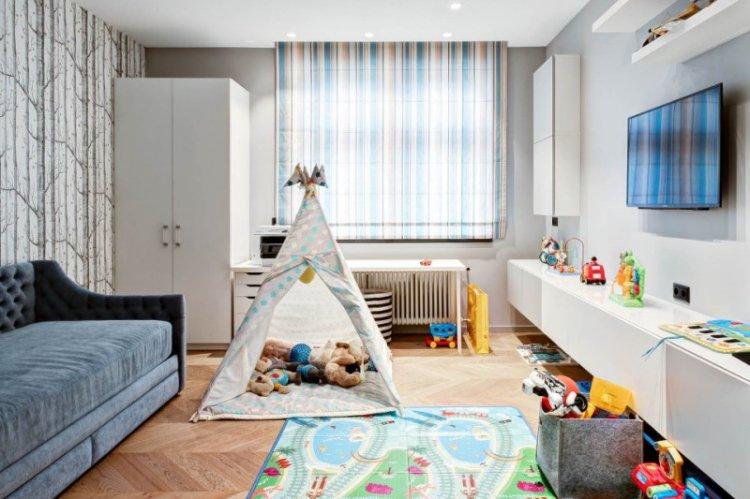
Frameless Roman Shades
This is a lighter and more graceful variation that you can even sew with your own hands. Guides remain in them, but there are no horizontal slats and weights, so they descend in a soft wave. A good choice for decorative styles like Provence tending to flowing lines, ruffles and flounces.
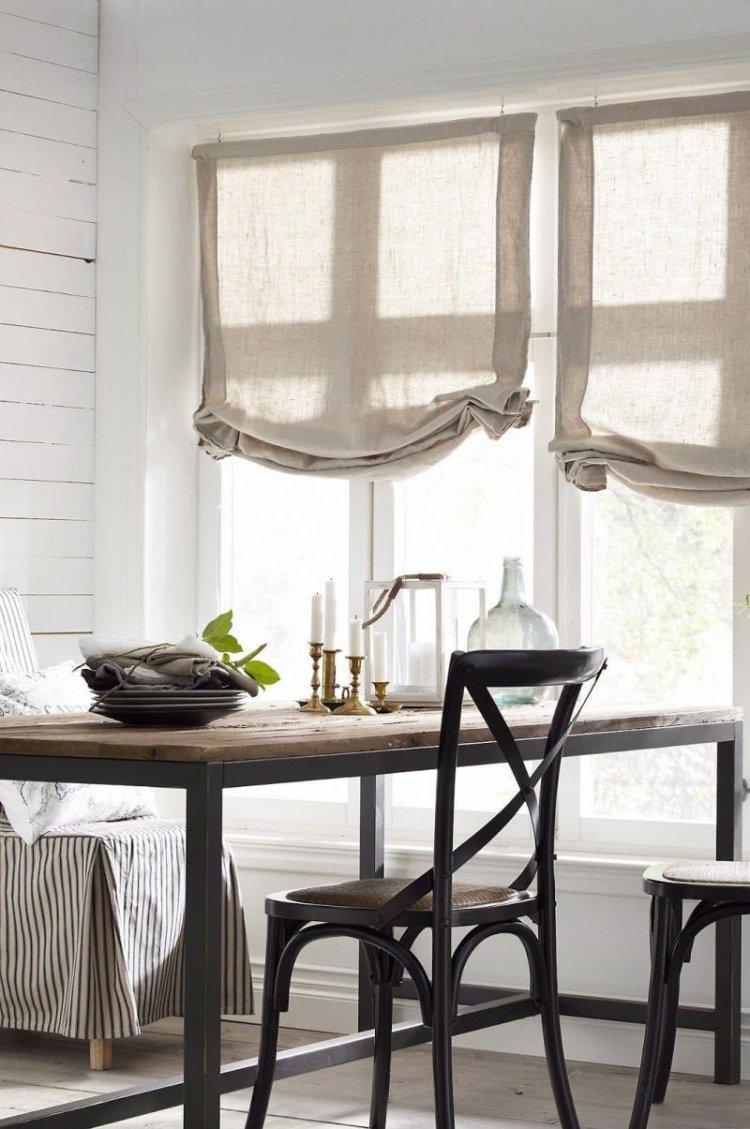
Cascading Roman Shades
Cascading ones differ from the classic ones in that even if the curtain is completely lowered, decorative folds will remain. They cascade down and create a drapery effect - it is for this that the look got its name. Such models are appropriate in expressive textured interiors - from modern to country.
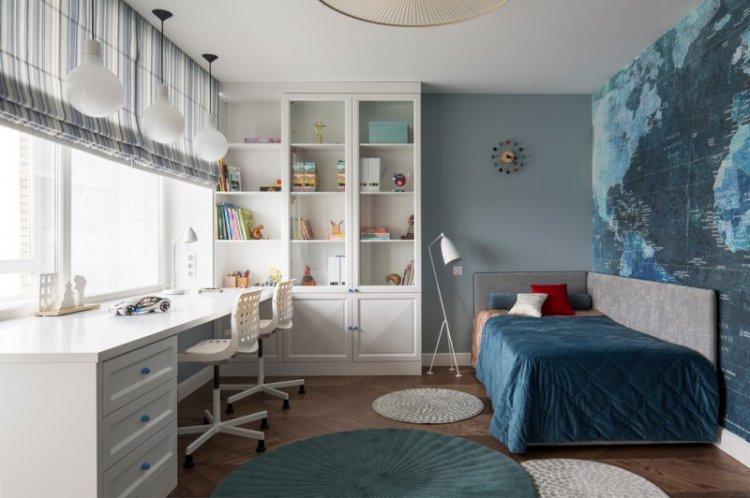
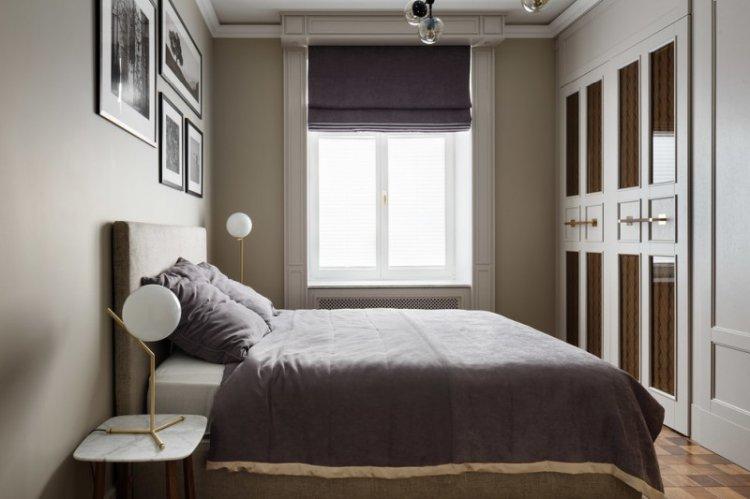
Photo curtains
Roman photocurtains are an unusual decorative solution when a drawing is pre-printed on a textile fabric. It can be flowers, a forest with a waterfall, the sea surface or a night city - any image of your choice. When the curtains are raised, it is not striking, but when lowered, it reveals itself in all its glory.
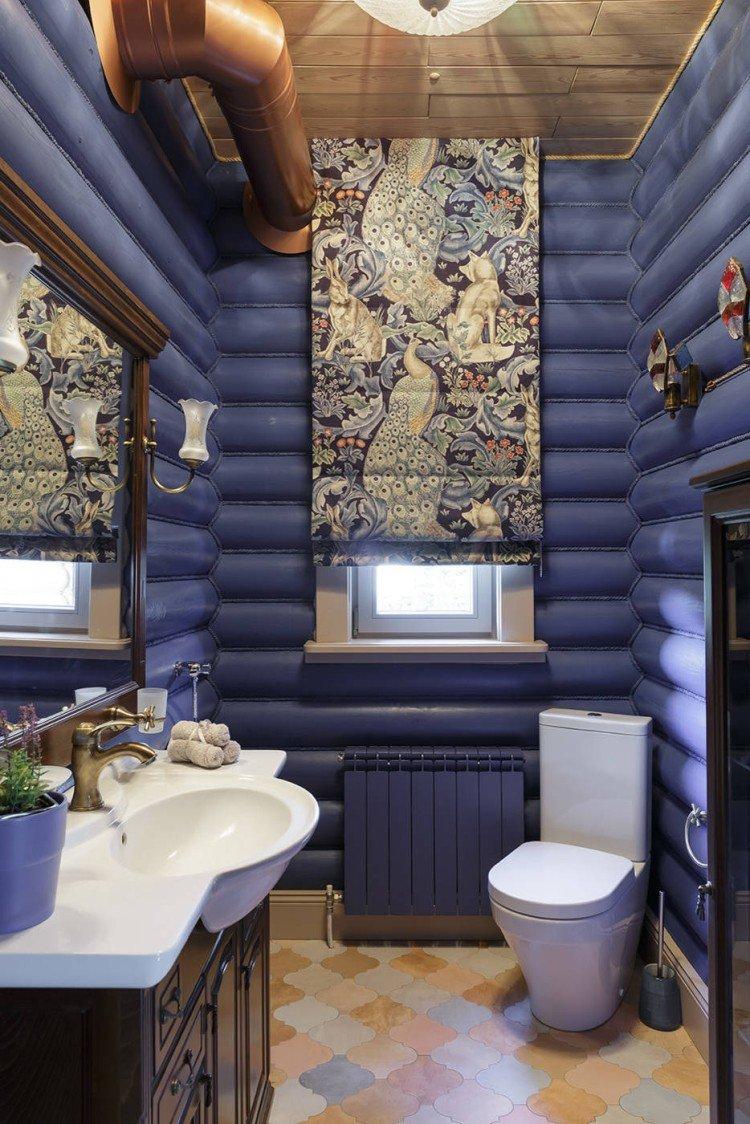
Light transmission
Technically, Roman shades can be sewn from any fabric, because they have no super tasks. They do not need to drape beautifully, form graceful vertical folds or flounces - everything is decided by the frame. Therefore, the thinnest lace fabric and dense impenetrable fabric are equally suitable.
Sheer curtains
If there is not enough light in the room or you want to save half of it, choose transparent curtains. Tulle or organza with interweaving of other fibers or burnt patterns looks interesting. And plain light curtains will be almost invisible, but they will protect the room from dust and insects.
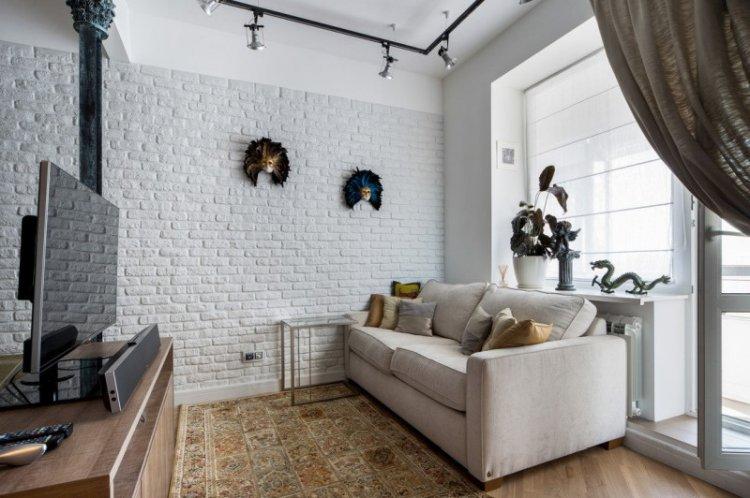
Sheer curtains
Such fabrics are good if the light level in the room is constantly changing during the day. Chameleon fabrics look interesting, which change their shade, depending on the amount of light. During the day they become translucent and hide the apartment from direct sunlight, and in the evening they seem almost invisible.
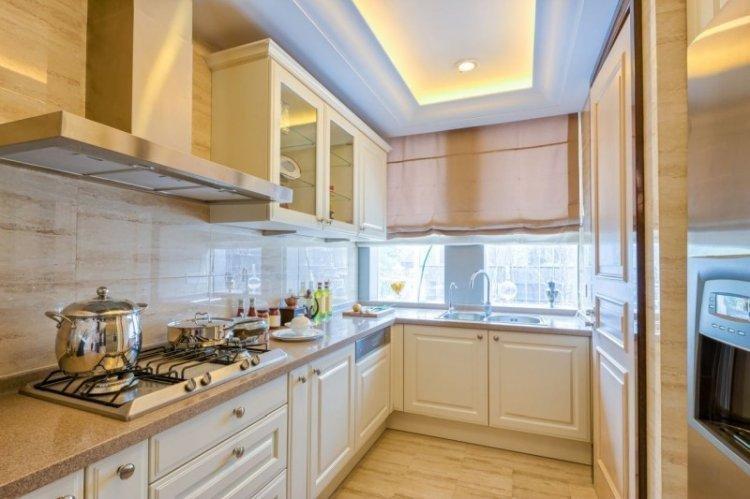
Blackout curtains
If there is too much sun in the room, you prefer comfort or want to completely isolate yourself from the outside world - choose dense opaque fabrics. Blackout Roman shades are more striking, so they will become a full-fledged independent accessory. You can even make an imitation of an antique tapestry on the window.
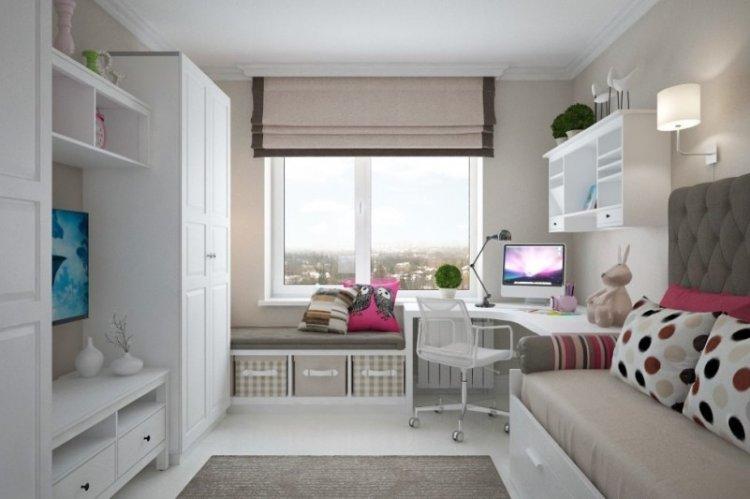
Which fabric to choose?
When choosing textiles for Roman blinds, start from their location and purpose.There is no one-size-fits-all advice here: both natural and synthetic fabrics have advantages as well as disadvantages.
Natural fabrics
Initially, Roman curtains were exclusively natural - cotton, linen, woolen, silk. And now, in the wake of eco-trends, this is again relevant, because such fabrics are completely safe and maintain a healthy microclimate. But keep in mind that they are more capricious in their care, they wrinkle a lot, are not as durable and survive regular use worse.
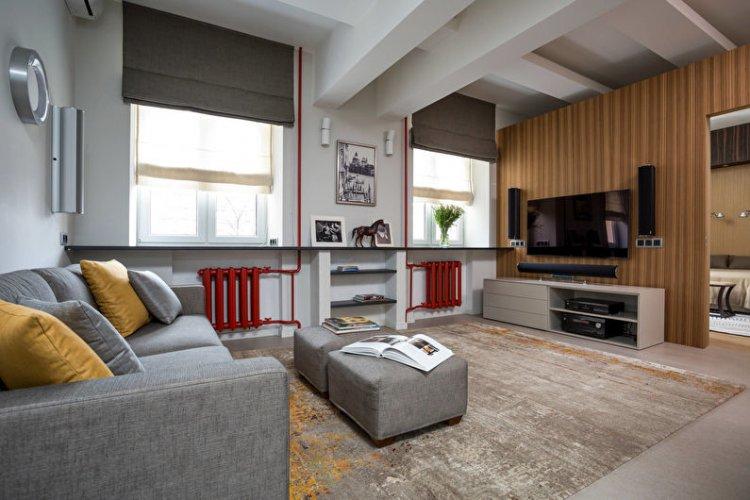
Synthetic fabrics
If ordinary curtains almost do not experience stress, then Roman blinds constantly slide along the guides. In addition, they are often used in kitchens or even in bathrooms - therefore, the durability and unpretentiousness of synthetic fabrics comes to the fore. It is mainly polyester and its variations. But remember that synthetics are afraid of high temperatures, they can become electrified and are less breathable.
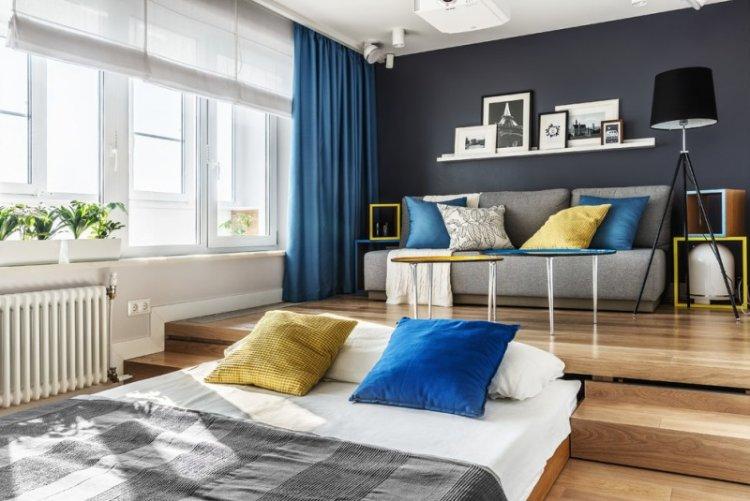
Blended fabrics
Blended fabrics are versatile, because they combine the advantages of both previous options. The properties and texture depend on the composition - usually polyester fibers are introduced into the natural base for strength. This is how modern jacquard, organza, velvet, artificial silk are made. The main problem is one - you need to carefully study the composition of a particular canvas.
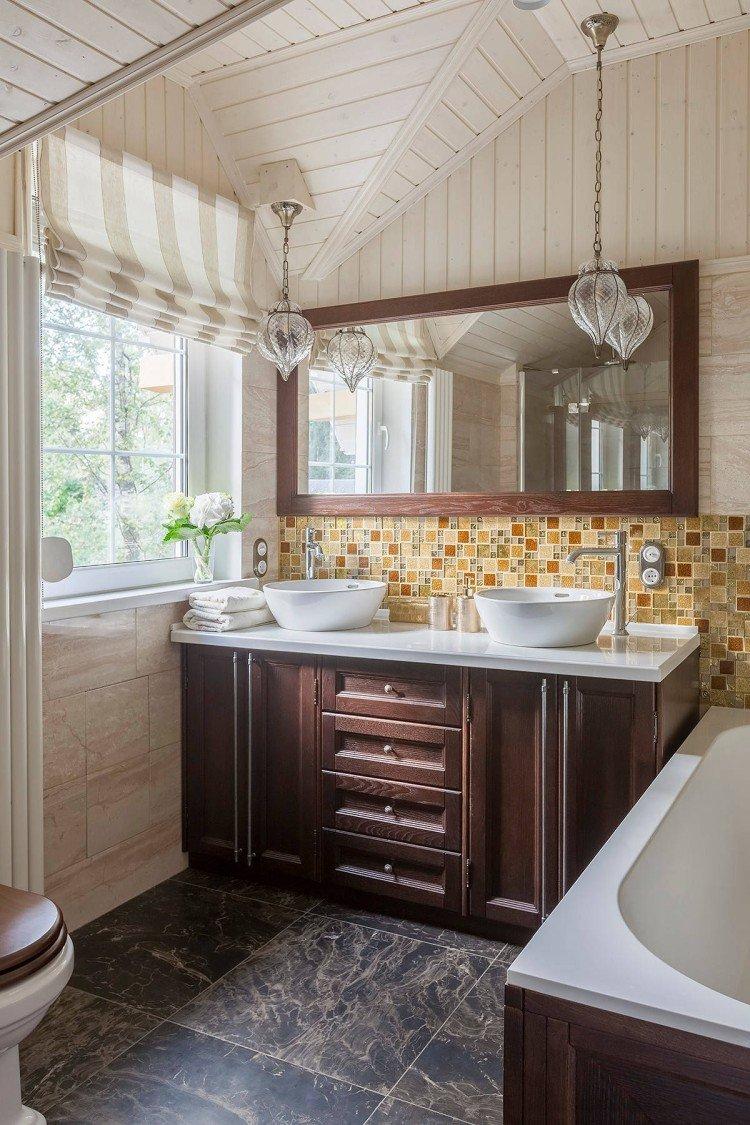
Roman shades and interior styles
Roman curtains do not have a pronounced stylistic affiliation, so they can be fitted into almost any interior. Of course, in a lush classics or pretentious baroque, they will not be too organic. But otherwise there are no limits to your imagination!
Roman shades in modern style
The entire interior gravitates towards laconic functionality, simple forms and equally simple solutions. Roman shades are the embodiment of all these features. Choose from blended fabrics in natural or deep elegant shades.
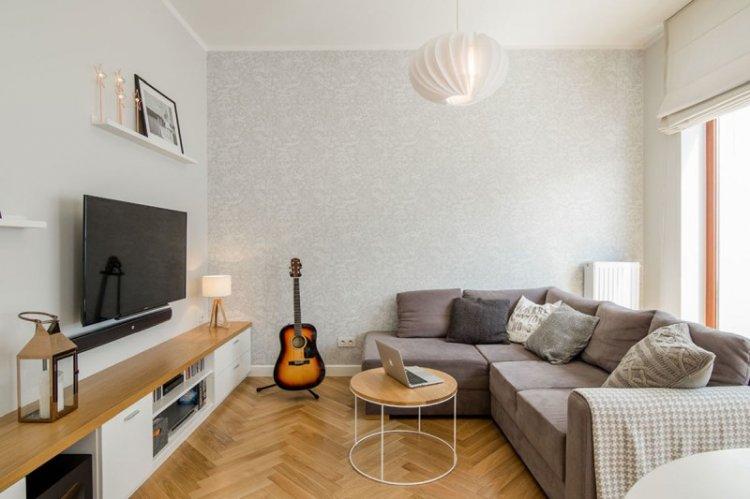
Roman blinds in the style of minimalism
Minimalism does not like excessive textiles, flounces, ruffles, lace and decor. Therefore, choosing curtains for such an interior is always a real test, and it is impossible to completely abandon them. And here simple monochromatic canvases come to the rescue, which fit snugly to the window.
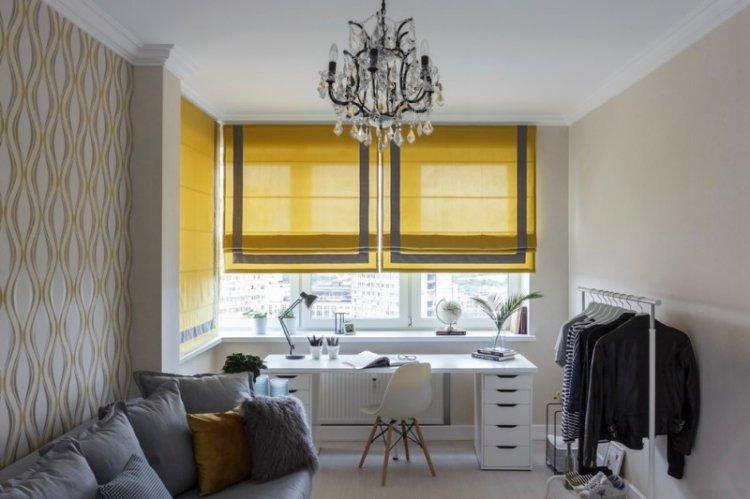
Roman blinds in Provence style
But Provence is characterized by a more lush and varied textile decor. But complex window compositions are not appropriate in all rooms: they are bulky, collect dust and visually reduce the room. In this case, feel free to choose canvases made of natural fabric with small floral or floral patterns, ribbons or lace edging.
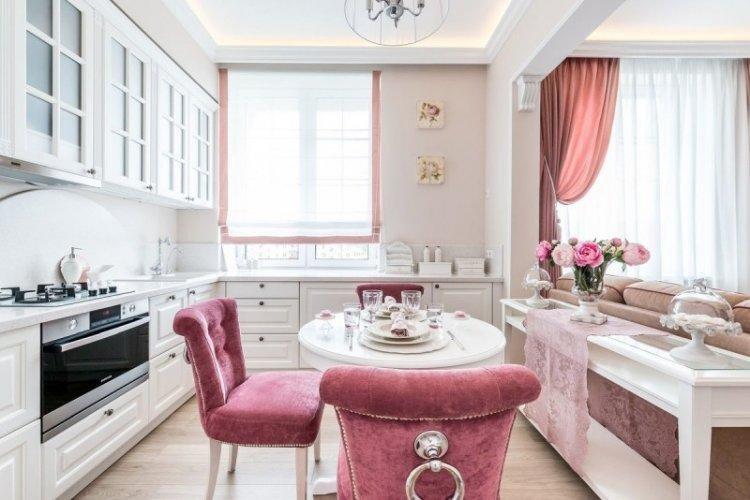
Scandinavian style roman blinds
The main rule of the Scandinavian style is to preserve as much natural light as possible, which is so lacking in northern latitudes. Therefore, heavy curtains are not found in such interiors - they contradict their concept. But minimalistic Roman blinds, which can be completely removed upstairs, are quite relevant.
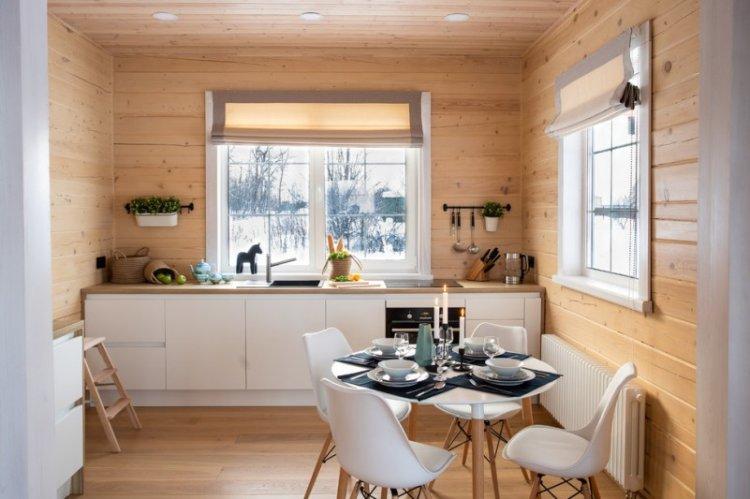
Loft-style roman blinds
Loft is a deliberately rough industrial style, so lush textiles are not always appropriate, even in its eclecticism. If there are a lot of bright accents in your interior, choose solid colored roman blinds. And if you combine a factory setting with classics and antique furniture - jacquard and tapestry are at your disposal.
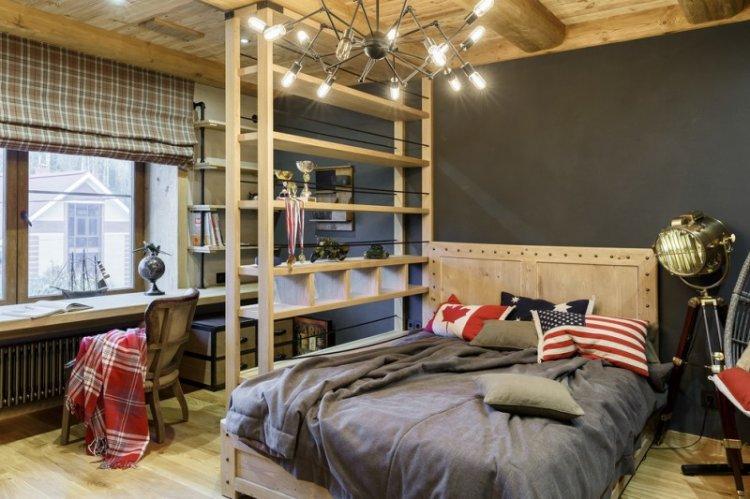
Color solutions
In small and dark rooms, light Roman curtains look perfect - these are almost the only curtains that do not clutter up the space. If there is enough space, pay attention to dense textiles in deep shades. You can use them as a bright accent, and then in order to refresh the interior it will be enough to replace the canvas, and not to repaint the walls or change the upholstery.
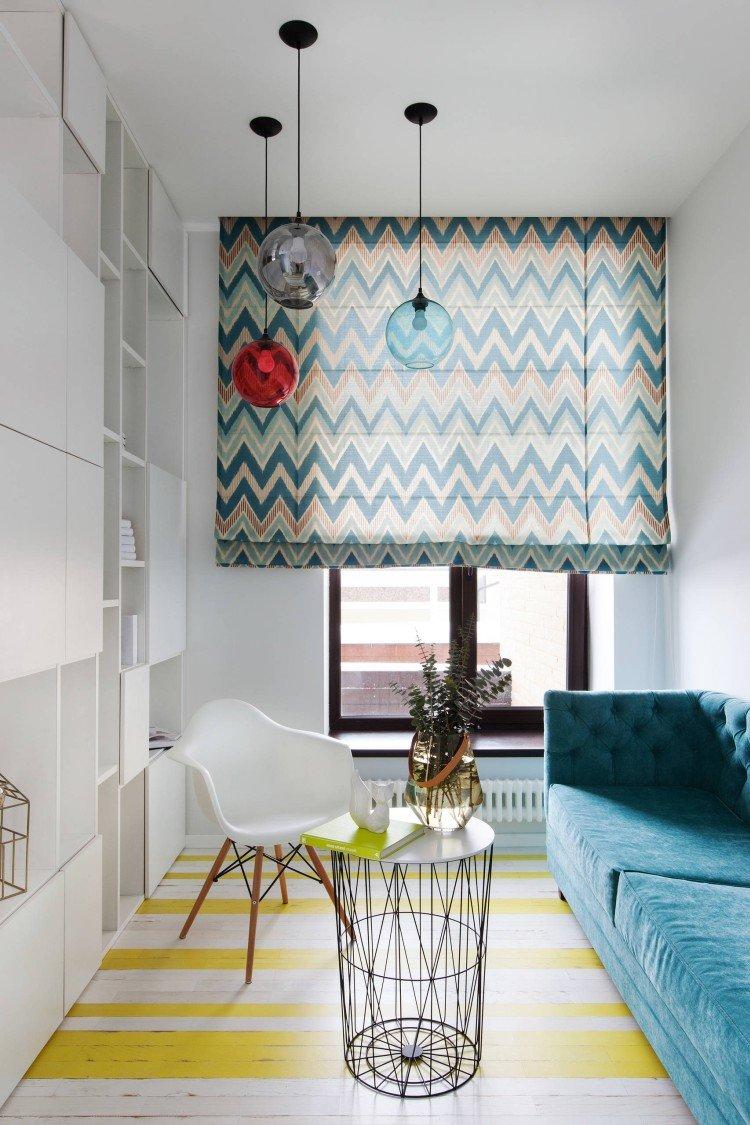
Mounting methods
To hang a Roman shade, you just need to properly fix the cornice. There are three ways - directly on the window, on the wall or ceiling mount.On the window - a classic version, when the lowered curtain does not cover the window sill, does not interfere with using it instead of a table top and is suitable for windows with front opening.
Mounting to the wall allows you to mask the slopes and visually expand the window opening, and with it the room. These curtains most often run straight down to the floor. This is a good choice for panoramic glazing, when there are no window sills and other draperies.

If you need to hang massive and heavy roller blinds, close several windows or the entire wall at once - there is a ceiling mount. The same mechanism is used when curtains are needed for zoning a room. It is most convenient to combine such a cornice with an electric drive.
Curtain rods are available with manual control, with a rotary chain mechanism or remote control. You can fix roller blinds without them - using a special adhesive tape. It is not so reliable, but you do not need to drill a wall or a plastic frame.
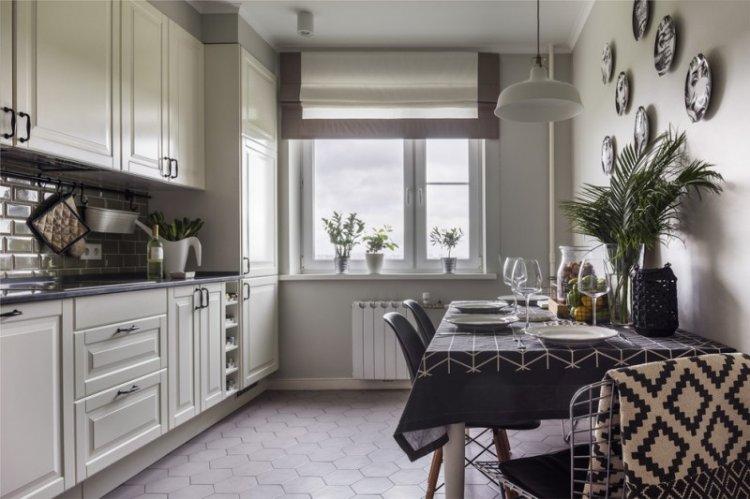
Combination with other types of curtains
Laconic Roman blinds blend well and combine with other types of curtains. For this, fastening to the window is most often used, so that the canvas passes almost close to the glass. The main thing is to harmoniously choose shades and textures.
This is a good option if you want to create a beautiful decorative composition with ruffles and grabs. For example, in the bedroom a blackout blackout roman blind will close the window at night, and during the day it will hide under a lambrequin and will not spoil the style of the interior.
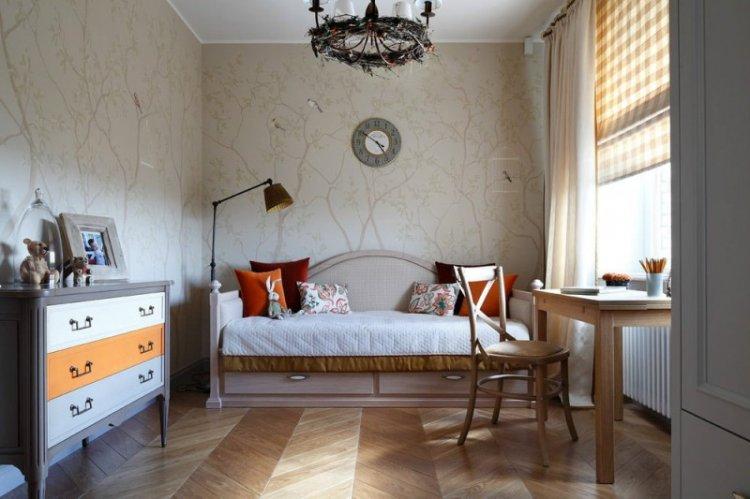
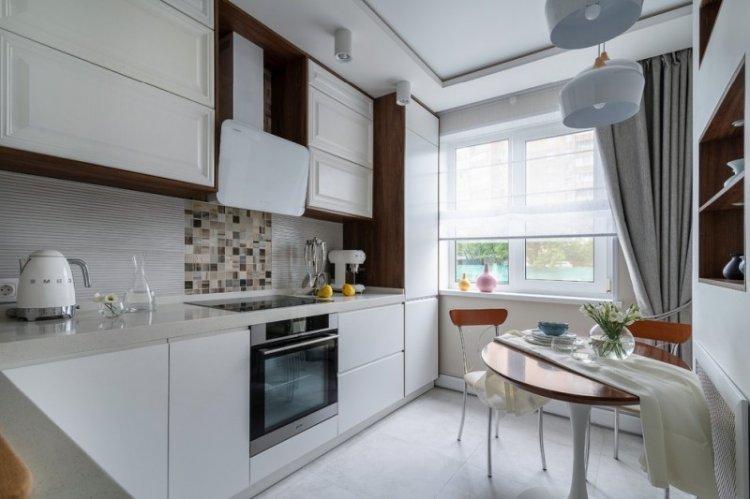
Roman blinds in the interior of the apartment - photo
The main popularity came to Roman blinds precisely due to their brevity, functionality and versatility. They can be easily integrated into the design of any room - it is always effective and comfortable!
Roman blinds in the kitchen
Functionality and safety are important in the kitchen area - all this is about roman blinds. The canvases on the frame do not scatter in the wind, so they get much less dirty, it is more difficult to accidentally damage them or even set them on fire. And modern synthetic materials do not absorb odors and can be easily washed even from grease.
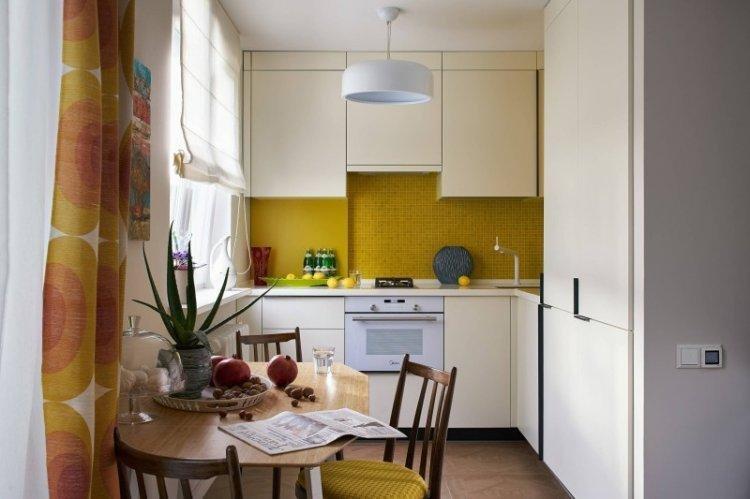
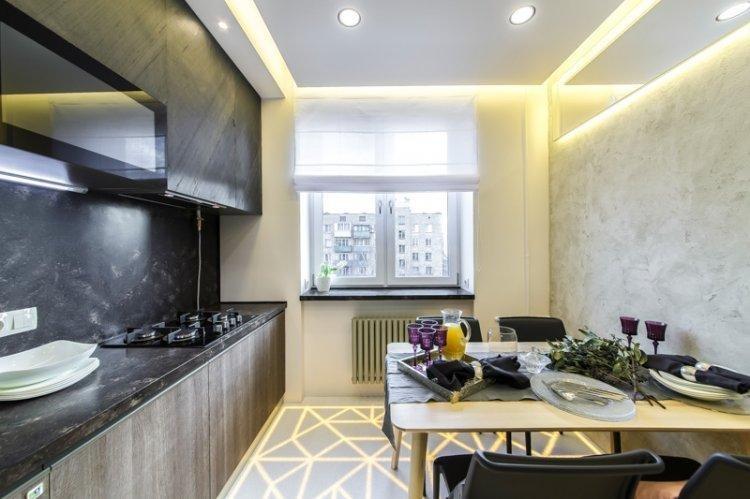
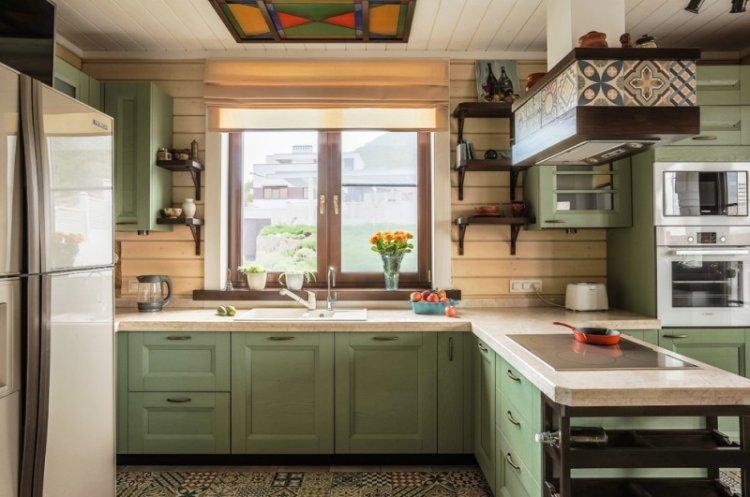
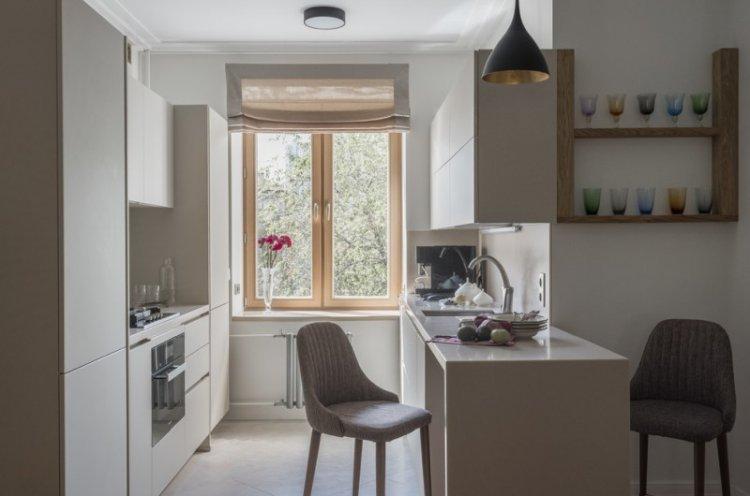
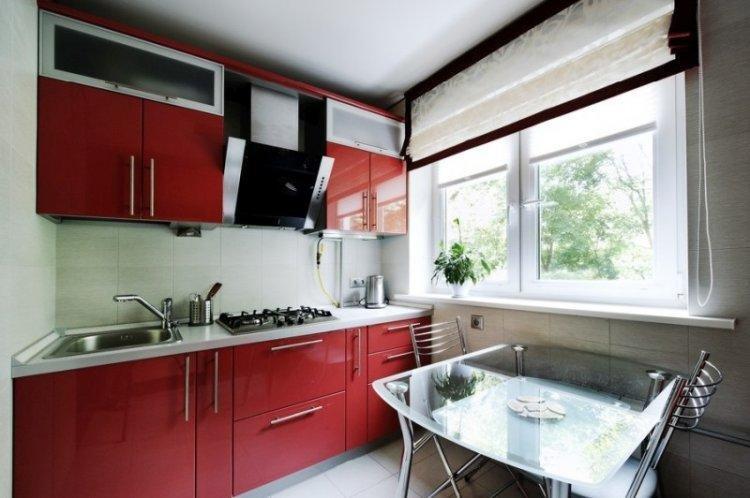
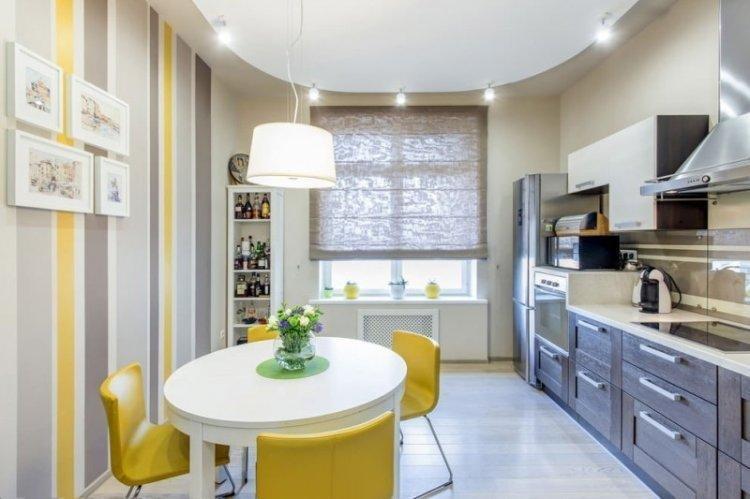
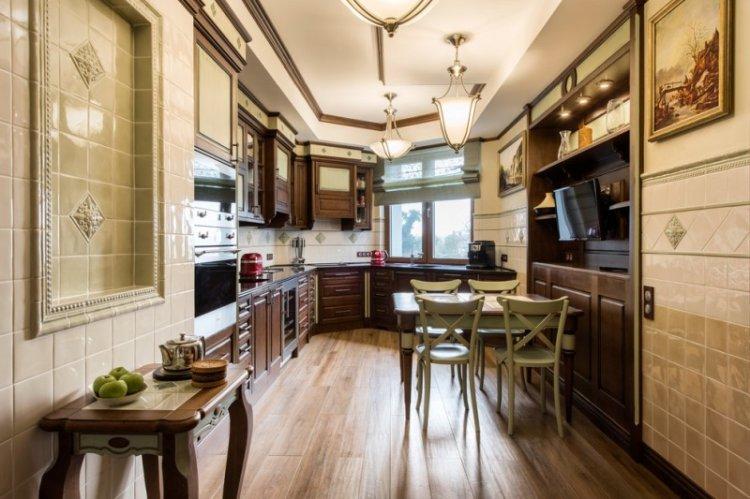
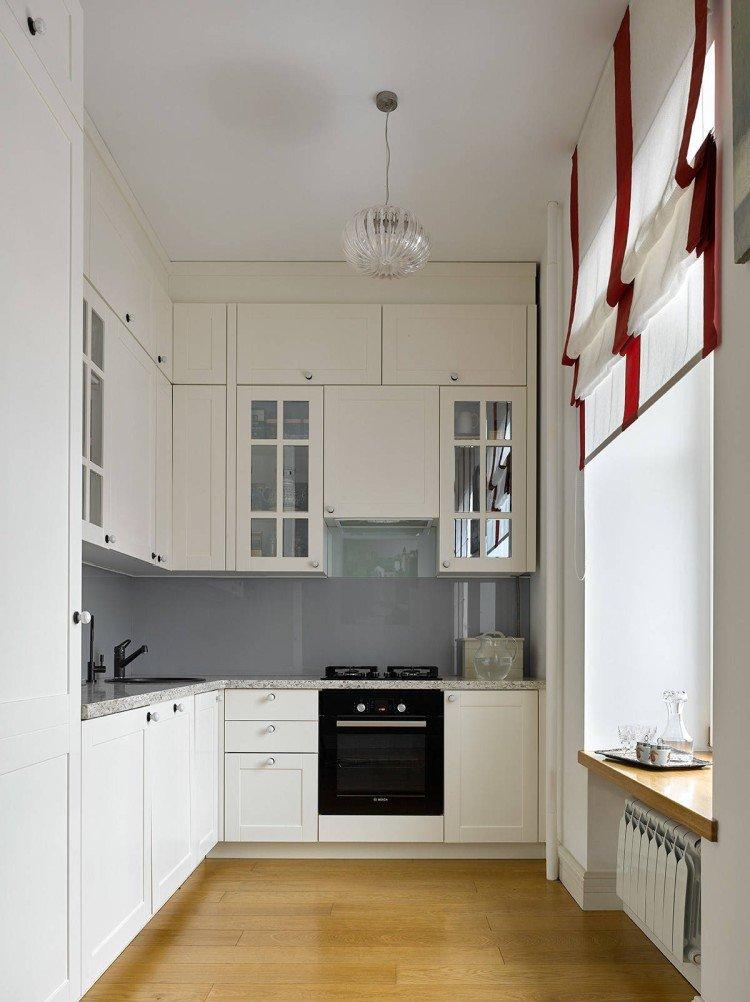
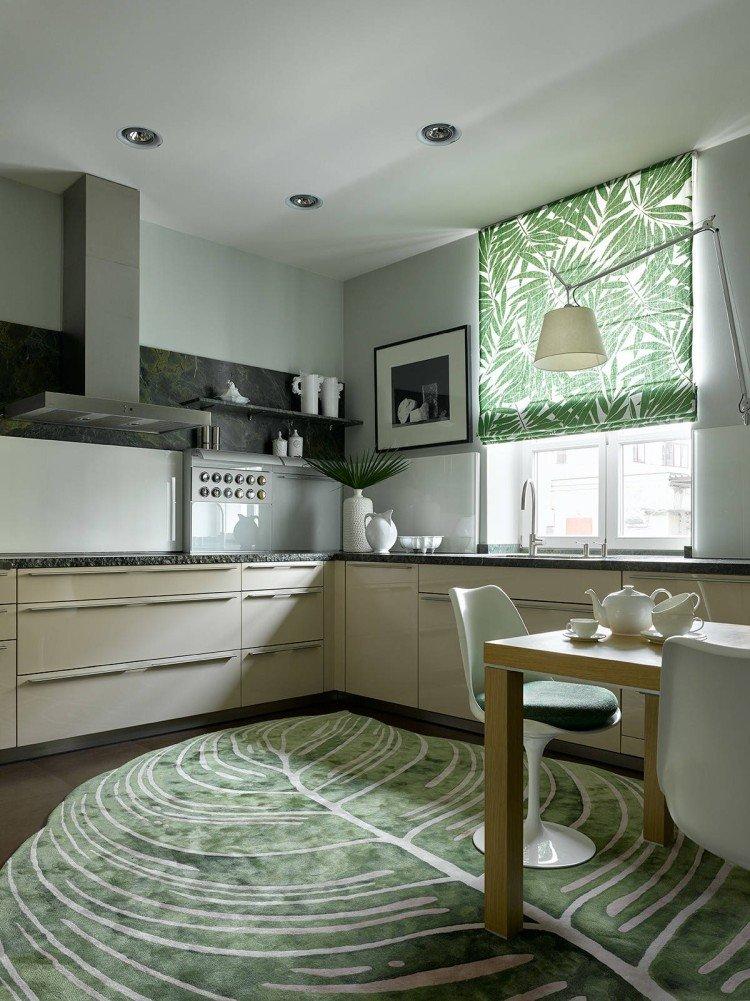
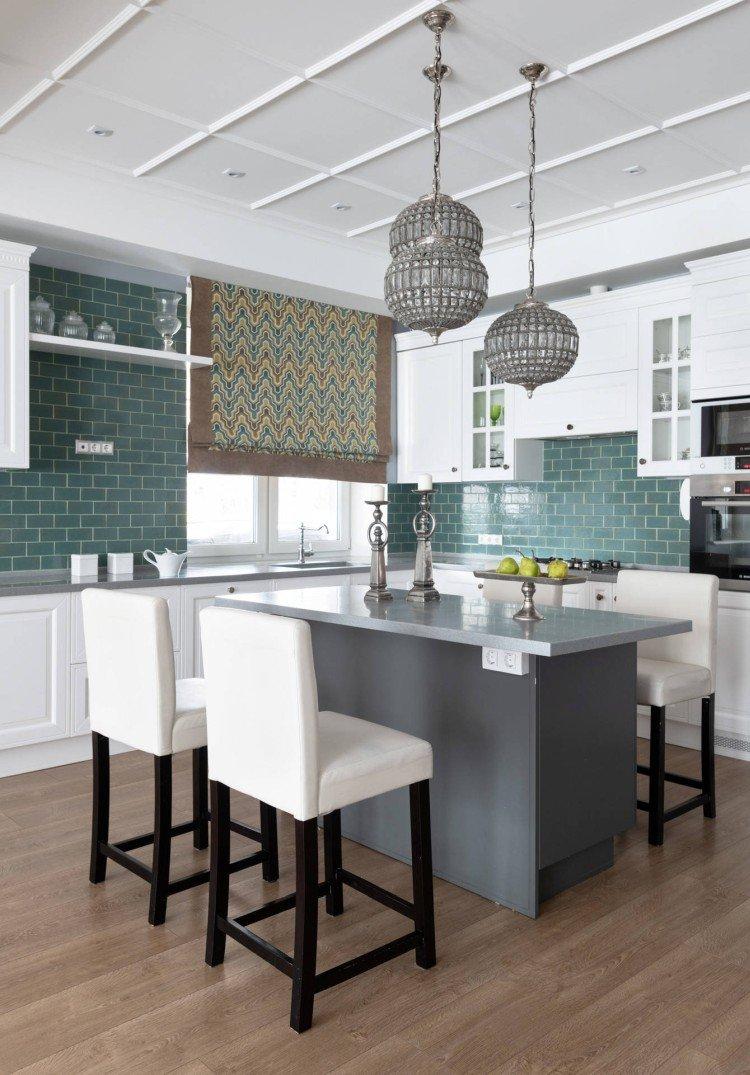
Roman blinds in the living room (hall)
Adjacent canvases in the living room are great space savers and complement modern interiors. They do not interfere with the use of the window sill, and even remodel it into a tabletop or workplace. And in combination with other curtains you can create the most interesting solutions without sacrificing functionality.
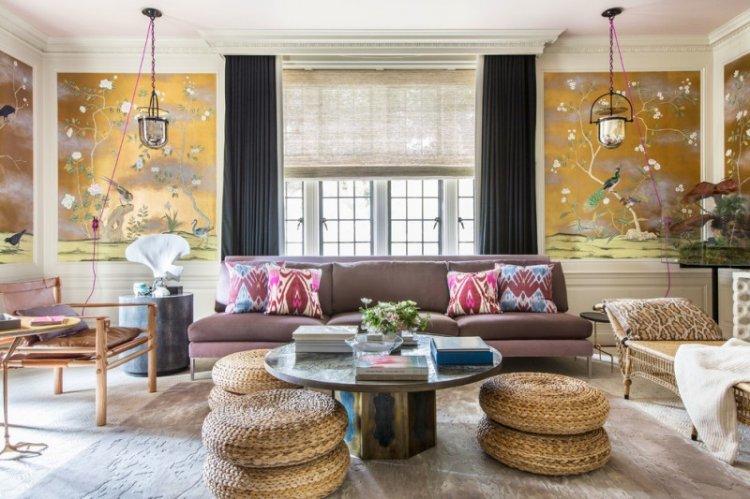
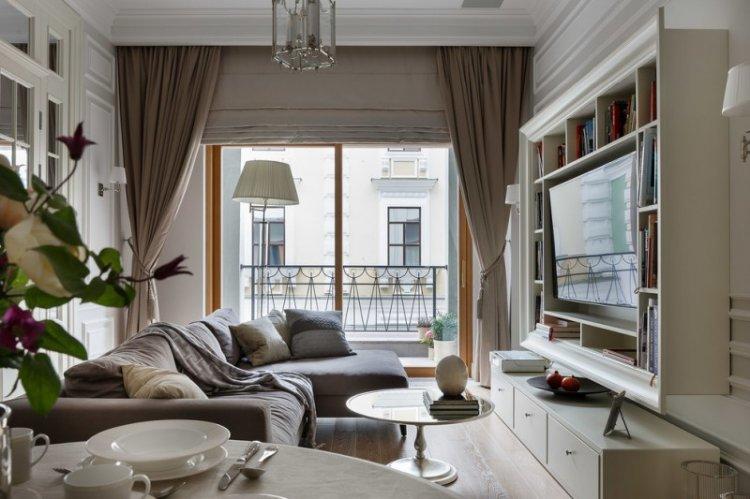
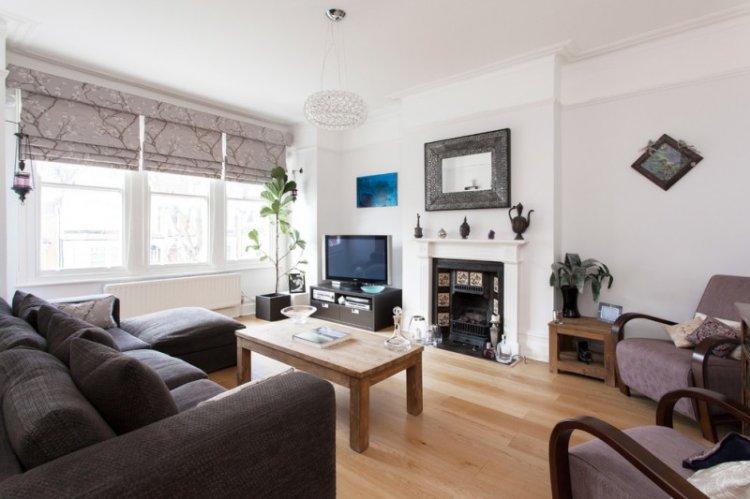
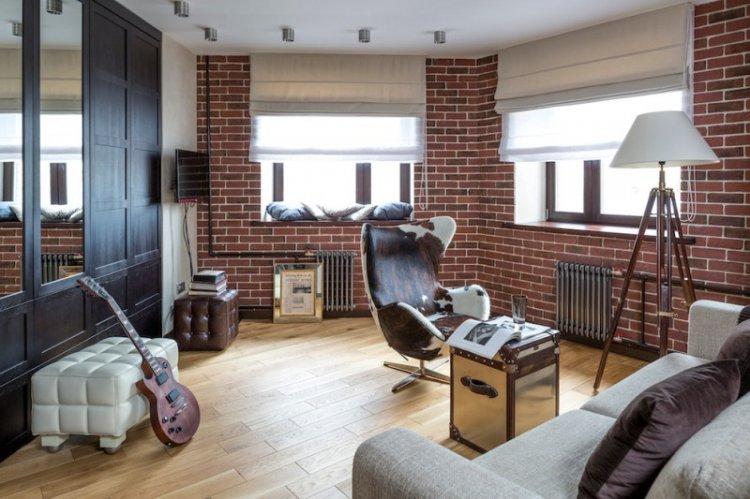
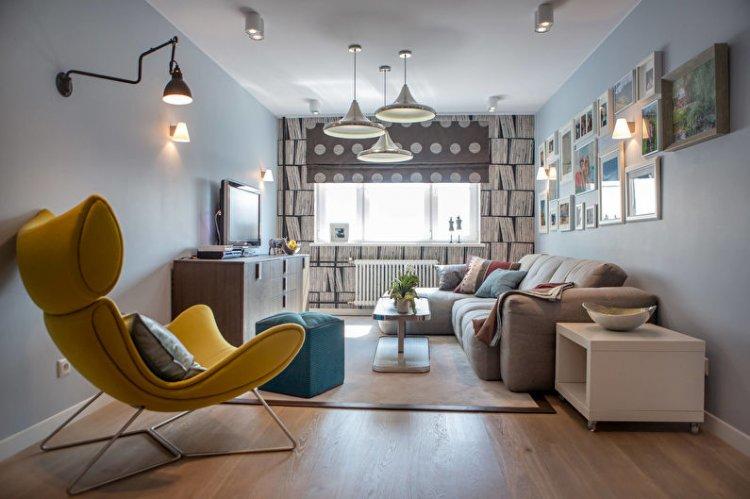
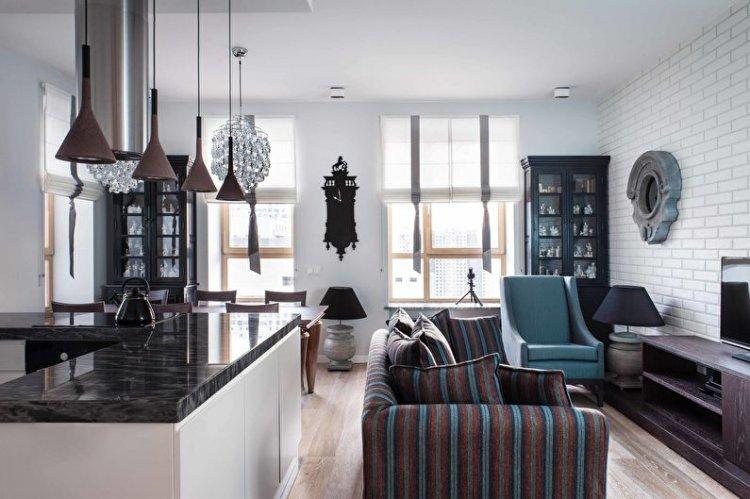
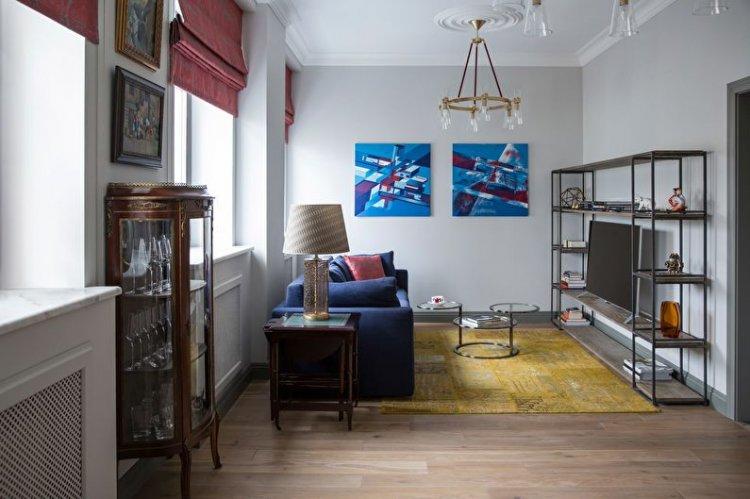
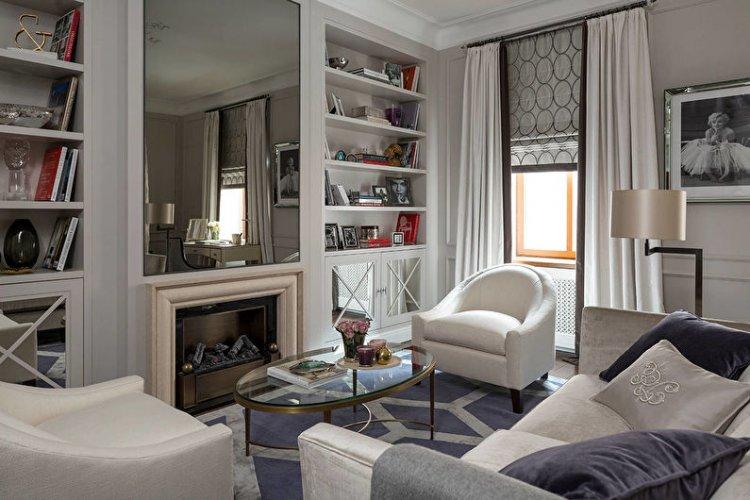
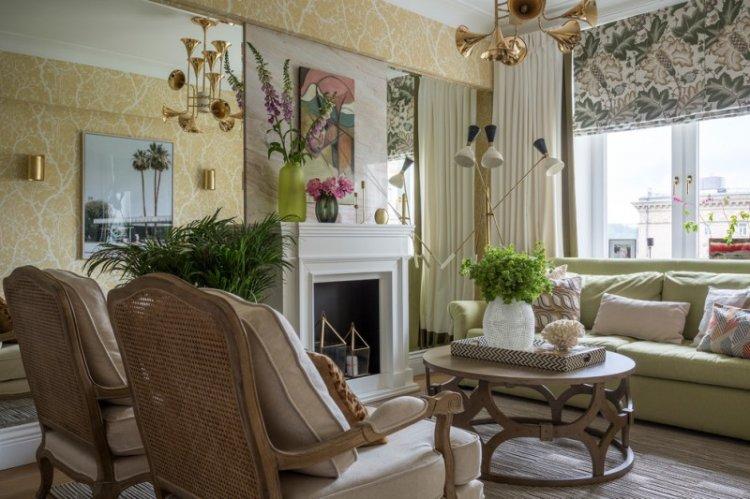
Roman blinds in the bedroom
It is believed that healthy and quality sleep can only be in absolute darkness. Thick blackout roman shades do this best because they fit very close. And besides, you can order a blackout lining, which does not miss anything at all.
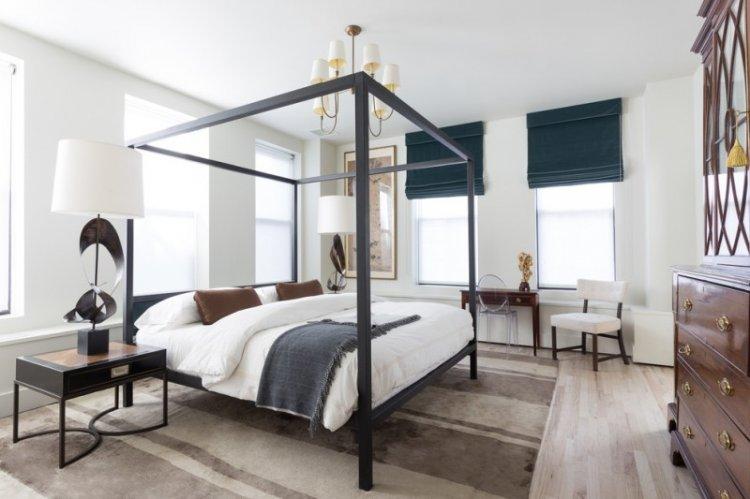
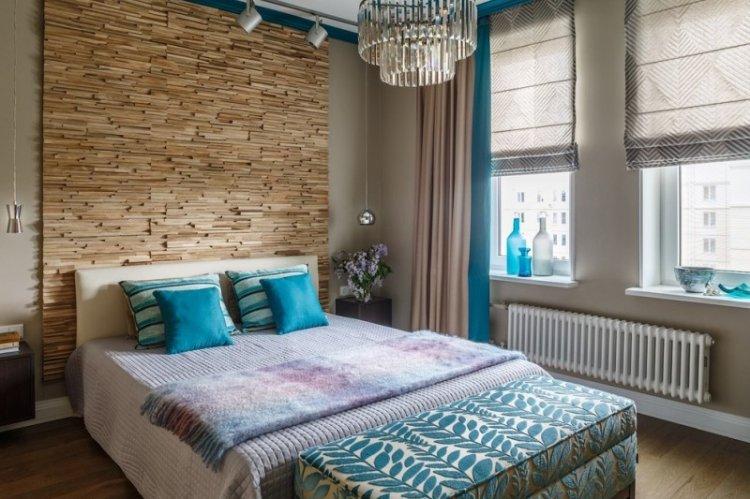
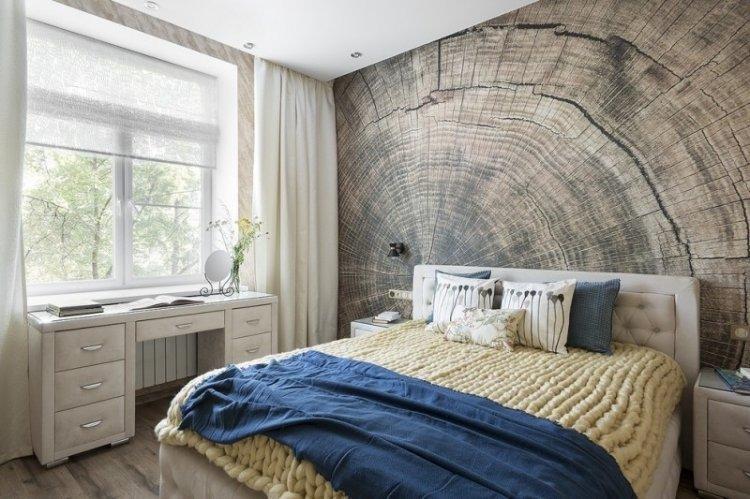
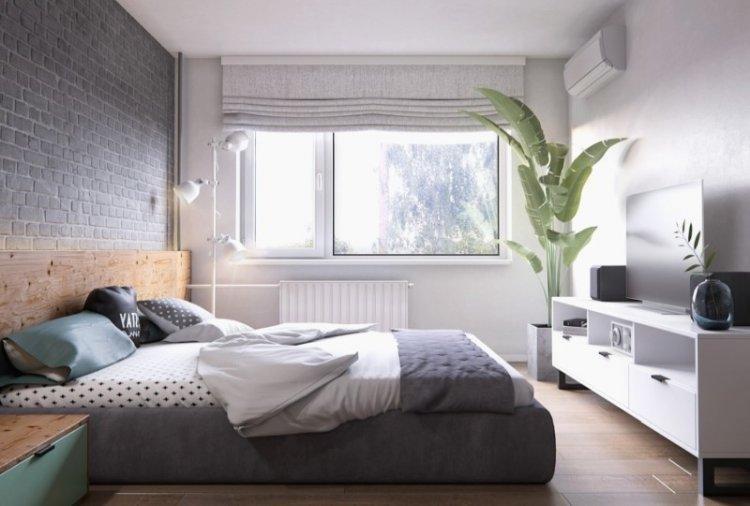
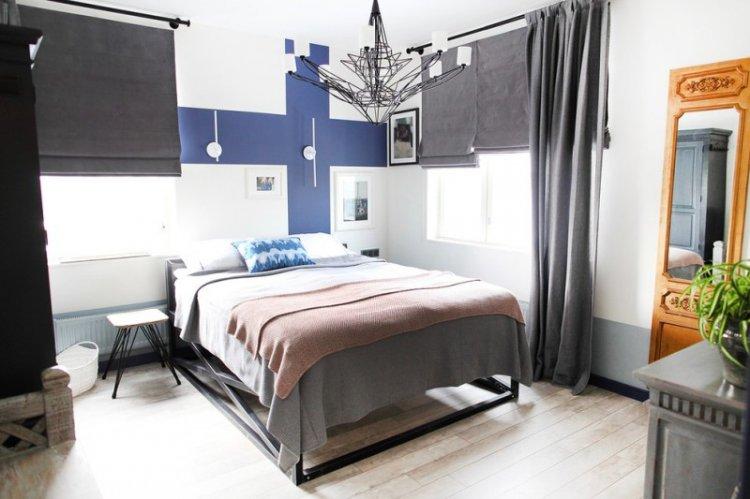
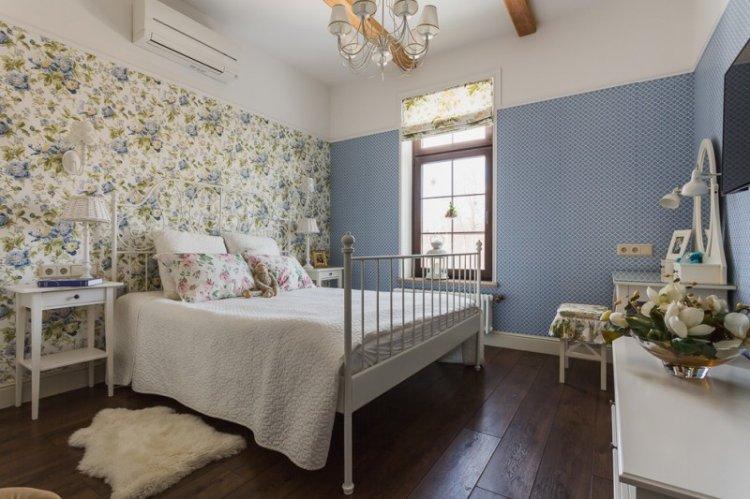
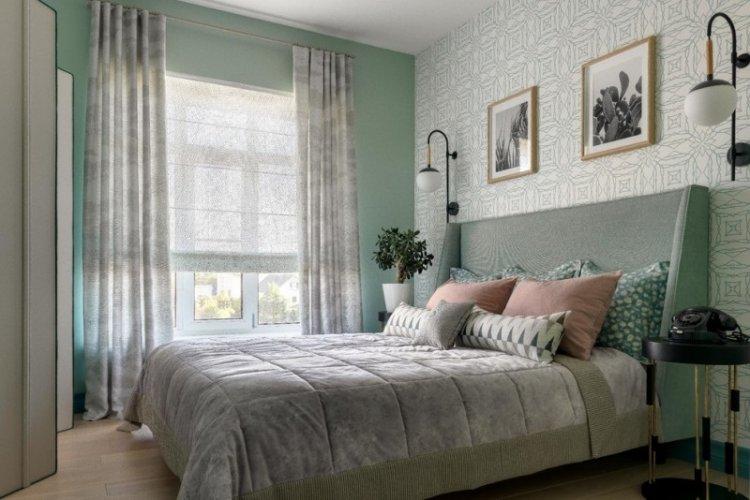
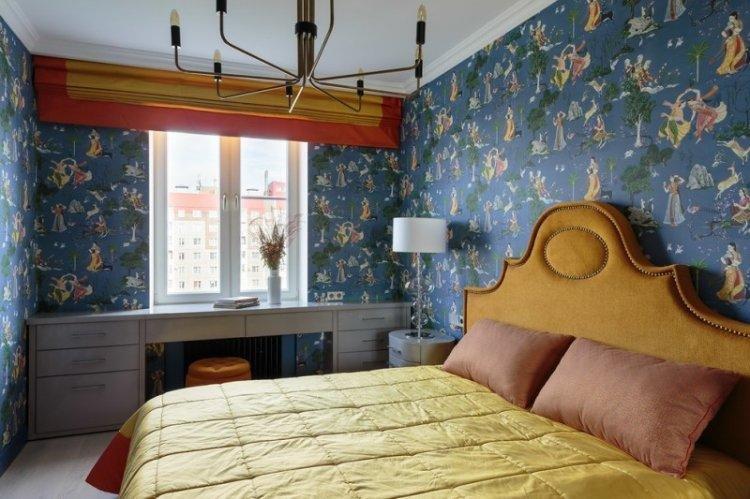
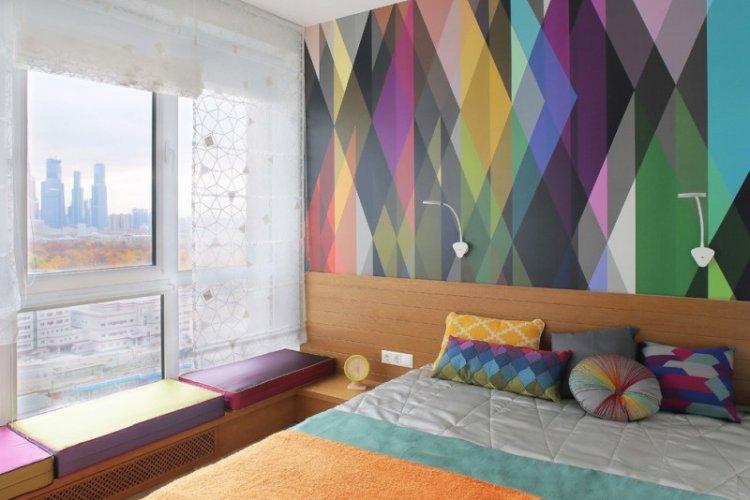
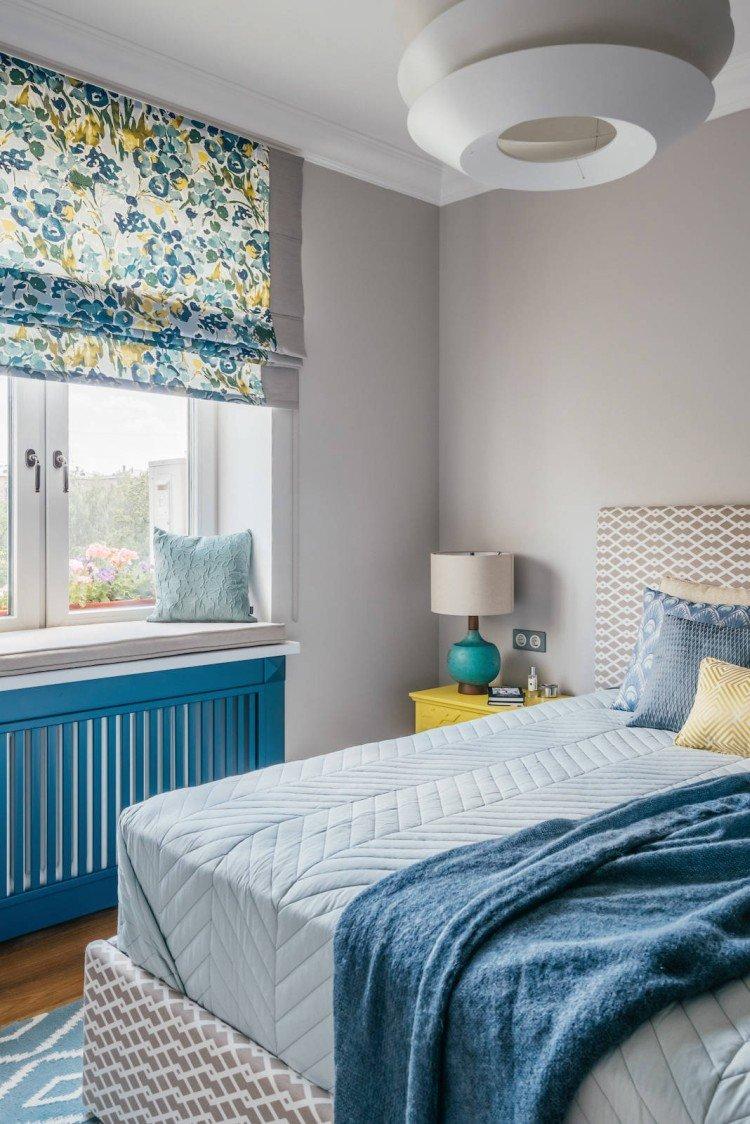
Roman blinds in the children's room
Roller blinds in the nursery are the safety of a precious child. A small child will not try to climb up the curtains, and when used, they collect less dust. Choose natural materials - and a healthy atmosphere will always reign around your baby!
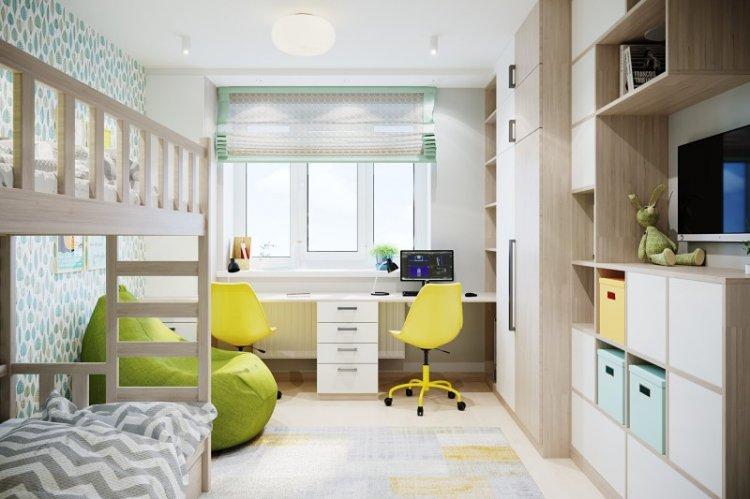
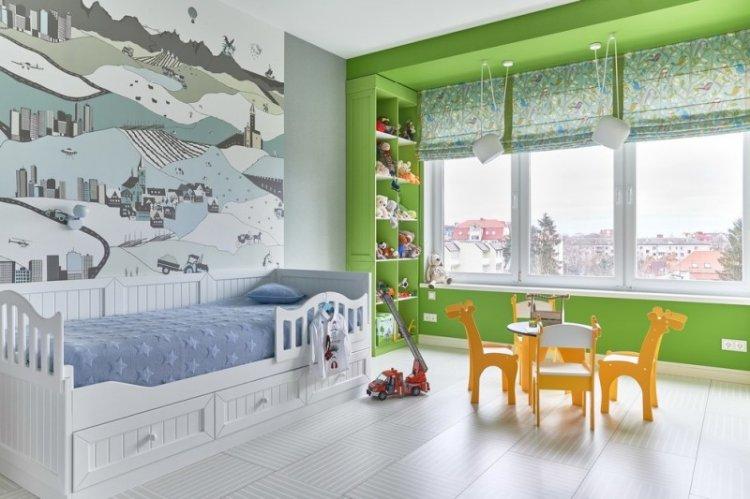
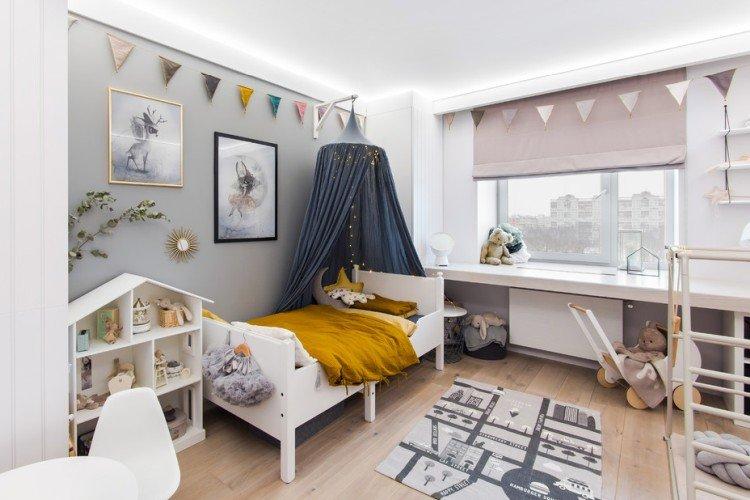
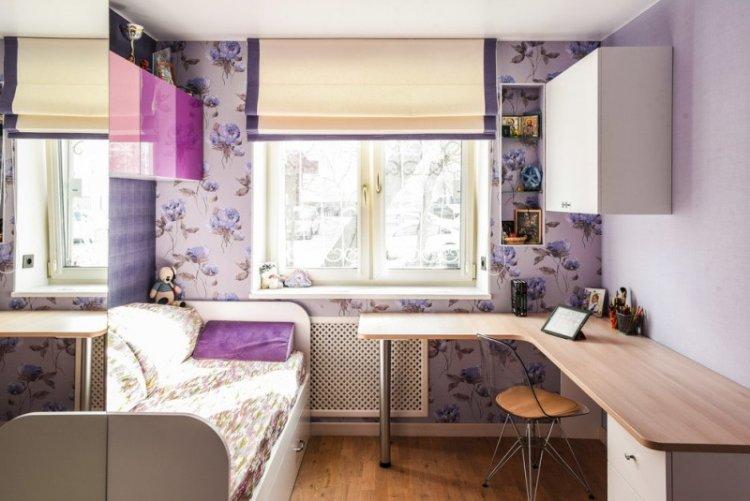
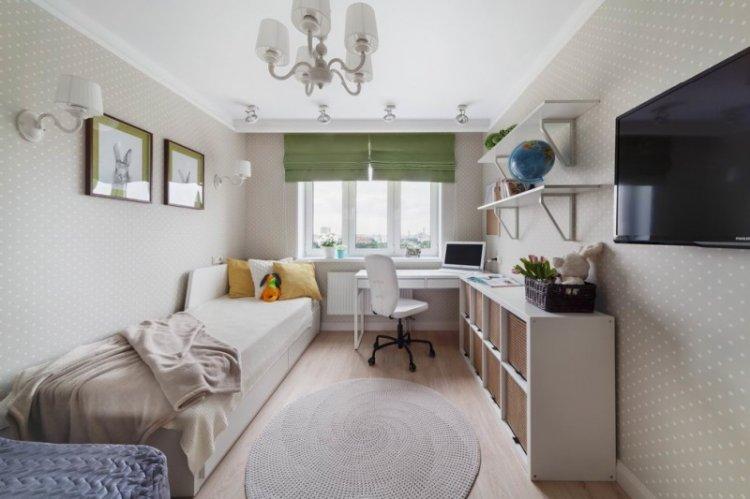
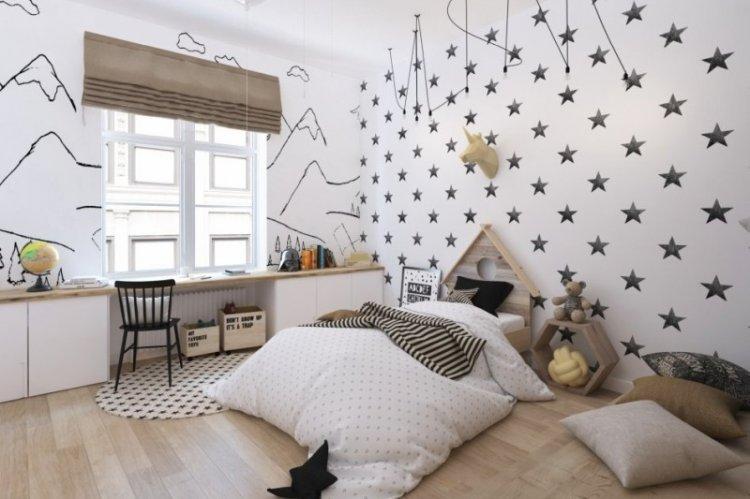
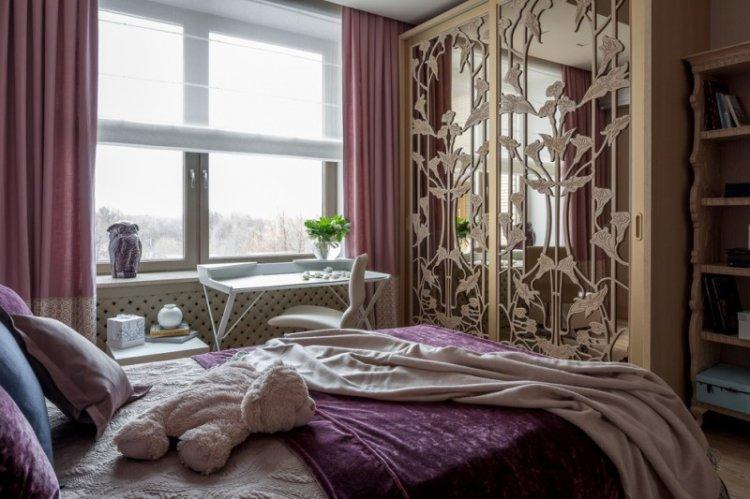
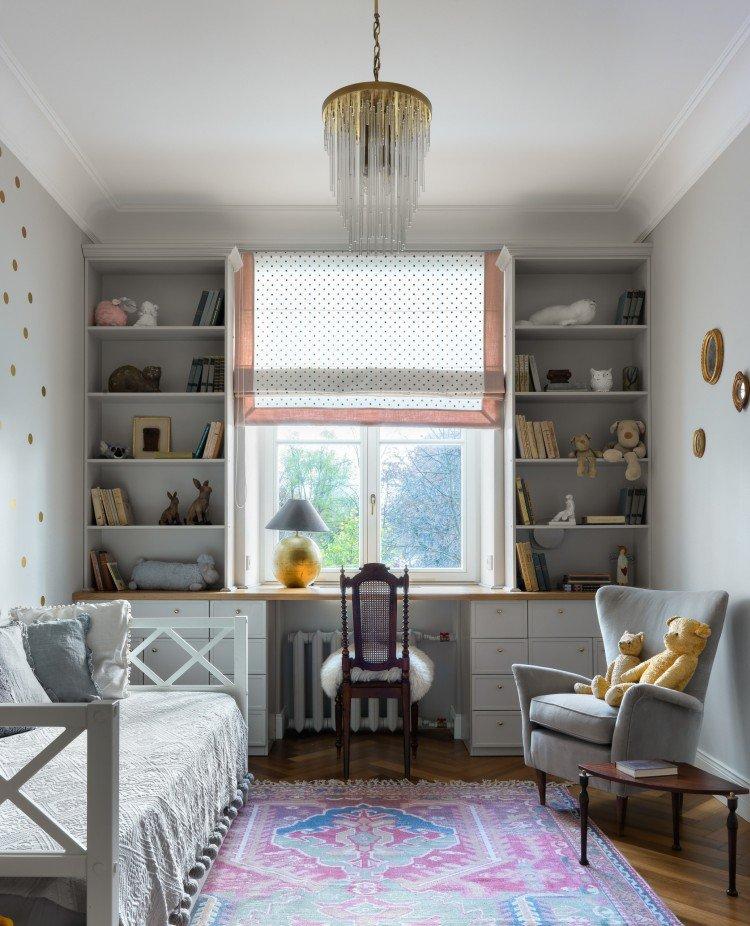
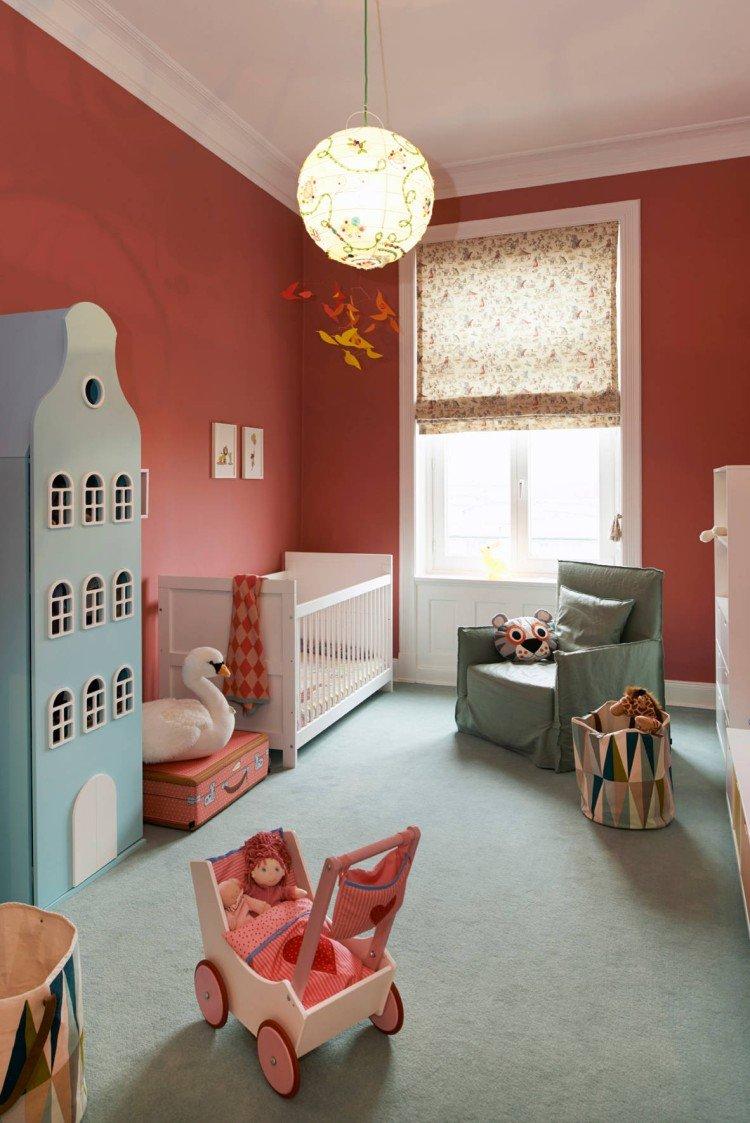
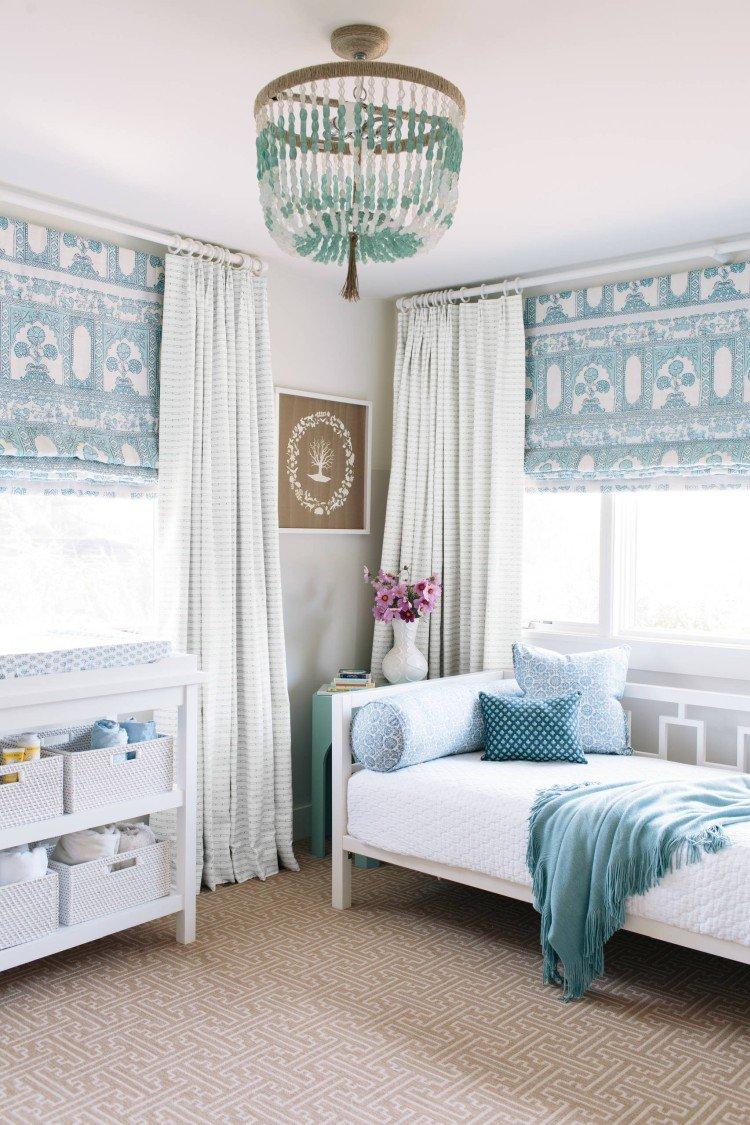
Roman blinds on the balcony or loggia
Shading spacious balconies or wide loggia windows from the sun is not an easy task. Ordinary curtains in such quantities take up too much space, they are difficult to remove and hang, and washing is a real challenge. This problem will not be with Roman blinds, but at the same time they can be completely raised up, and not collected in a large volumetric bundle in the corner.
